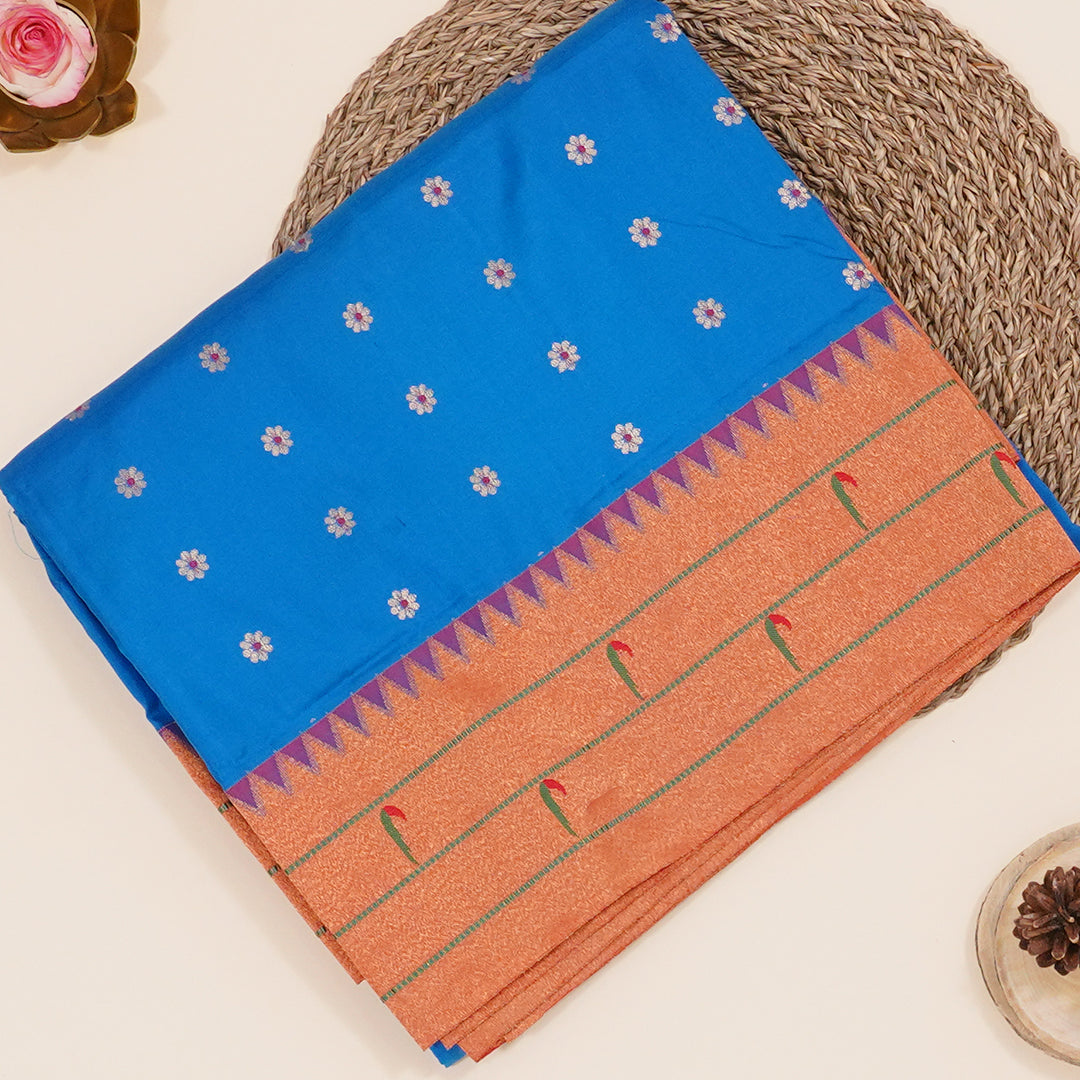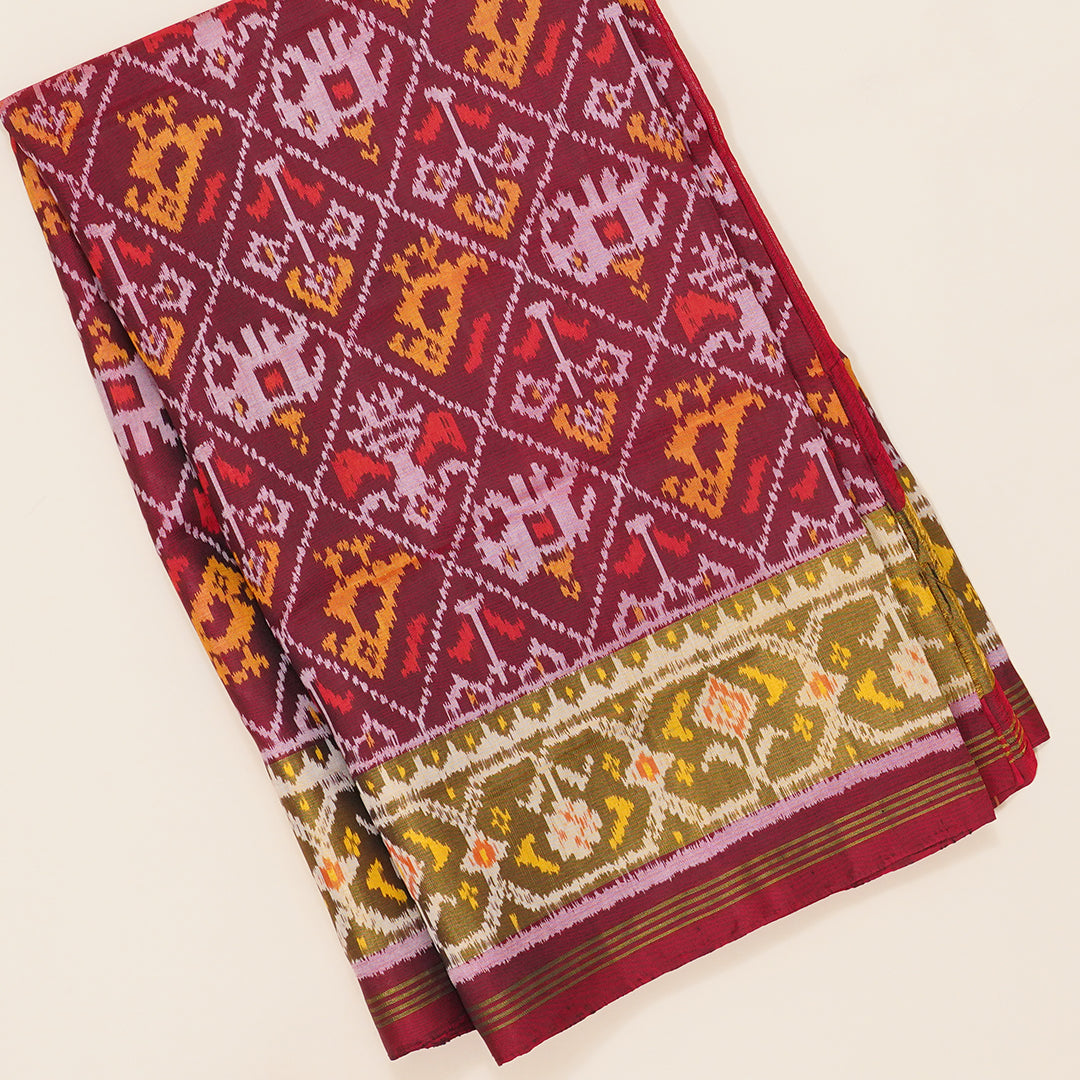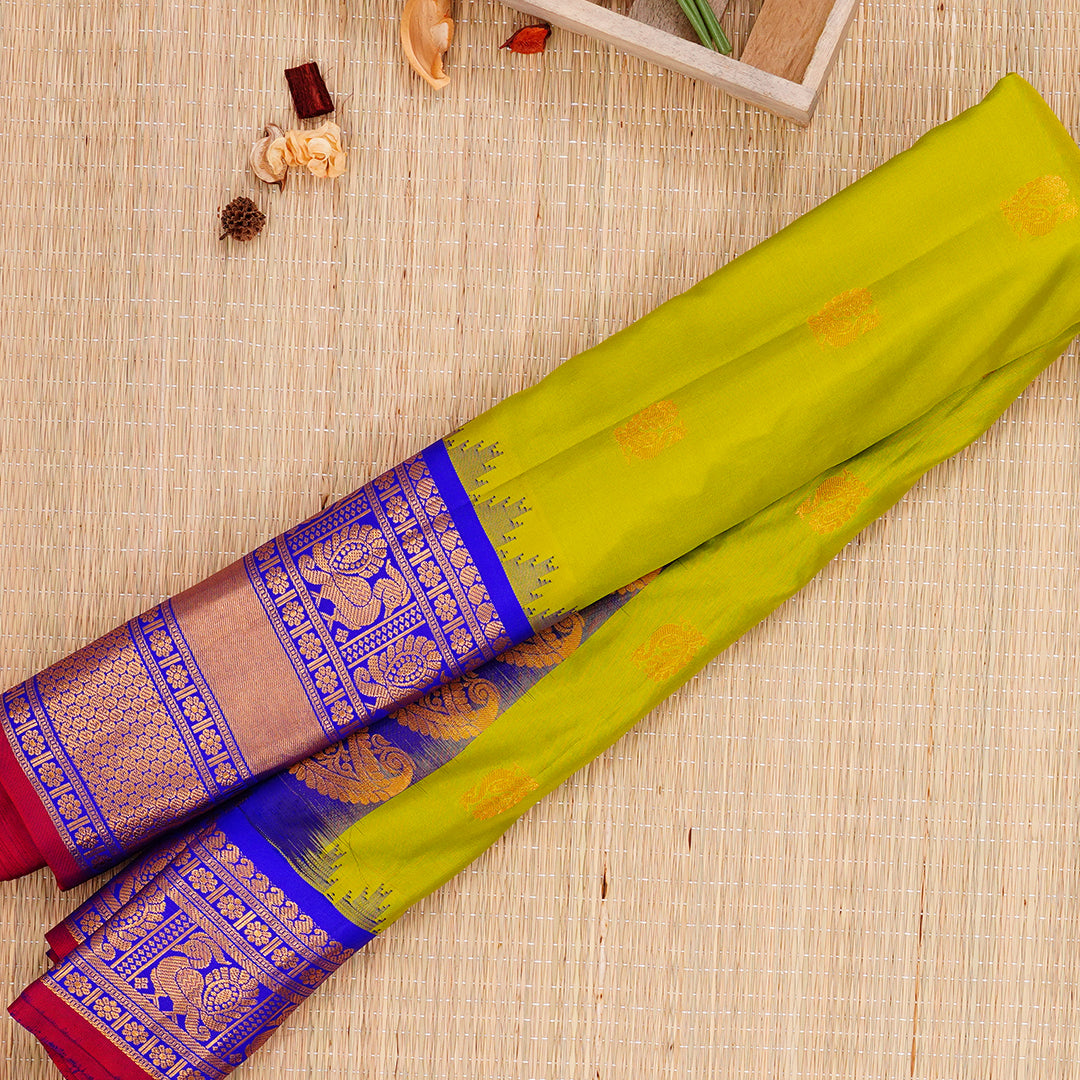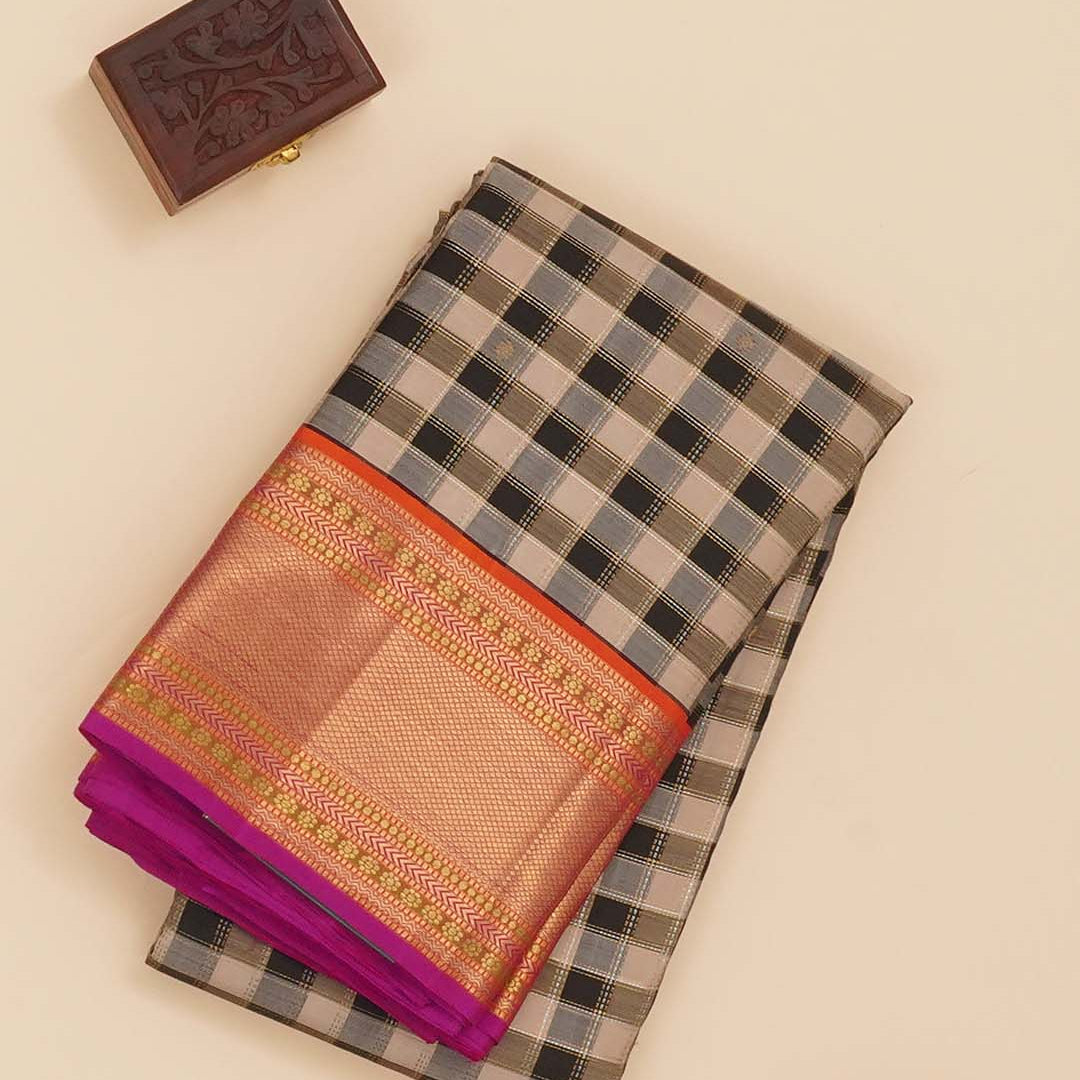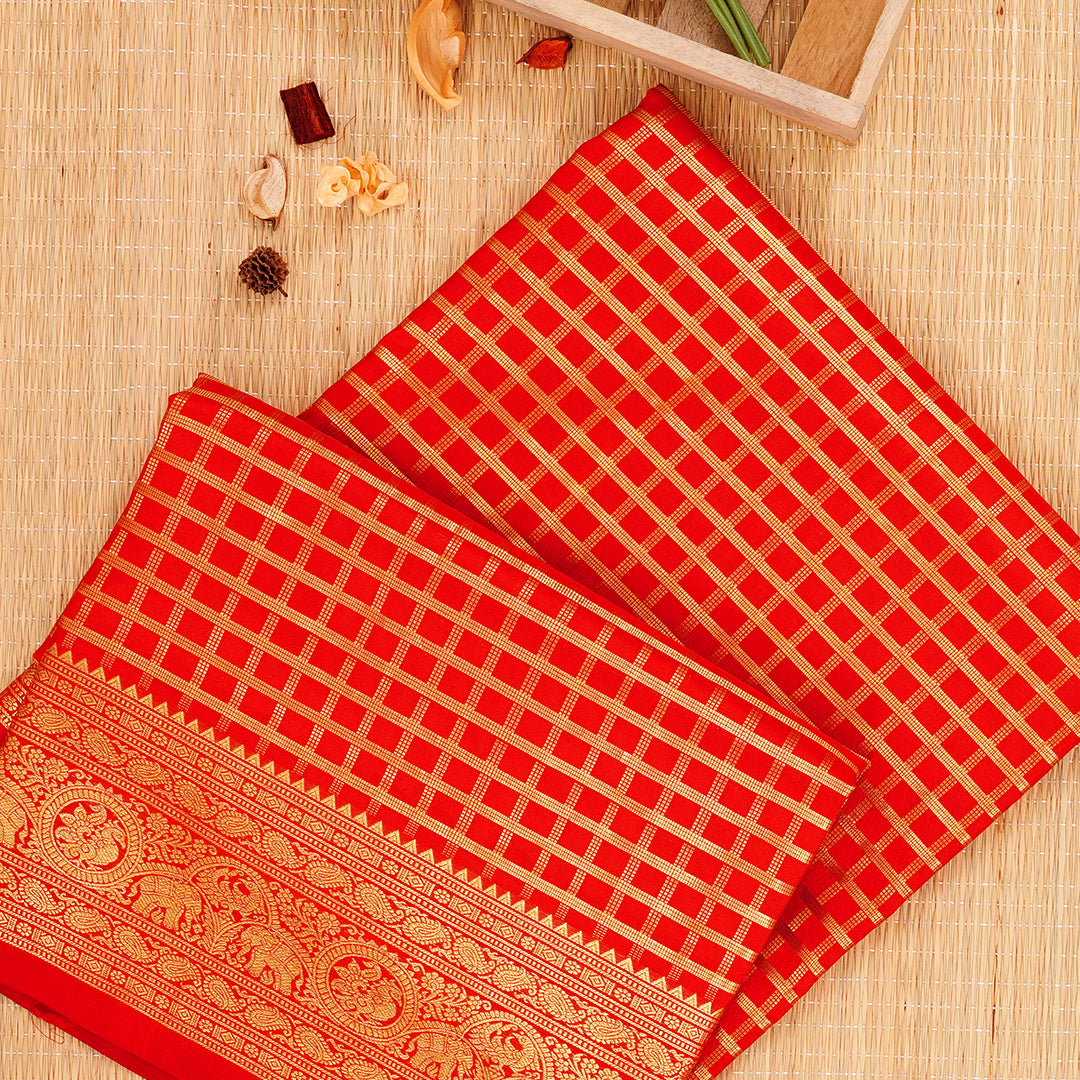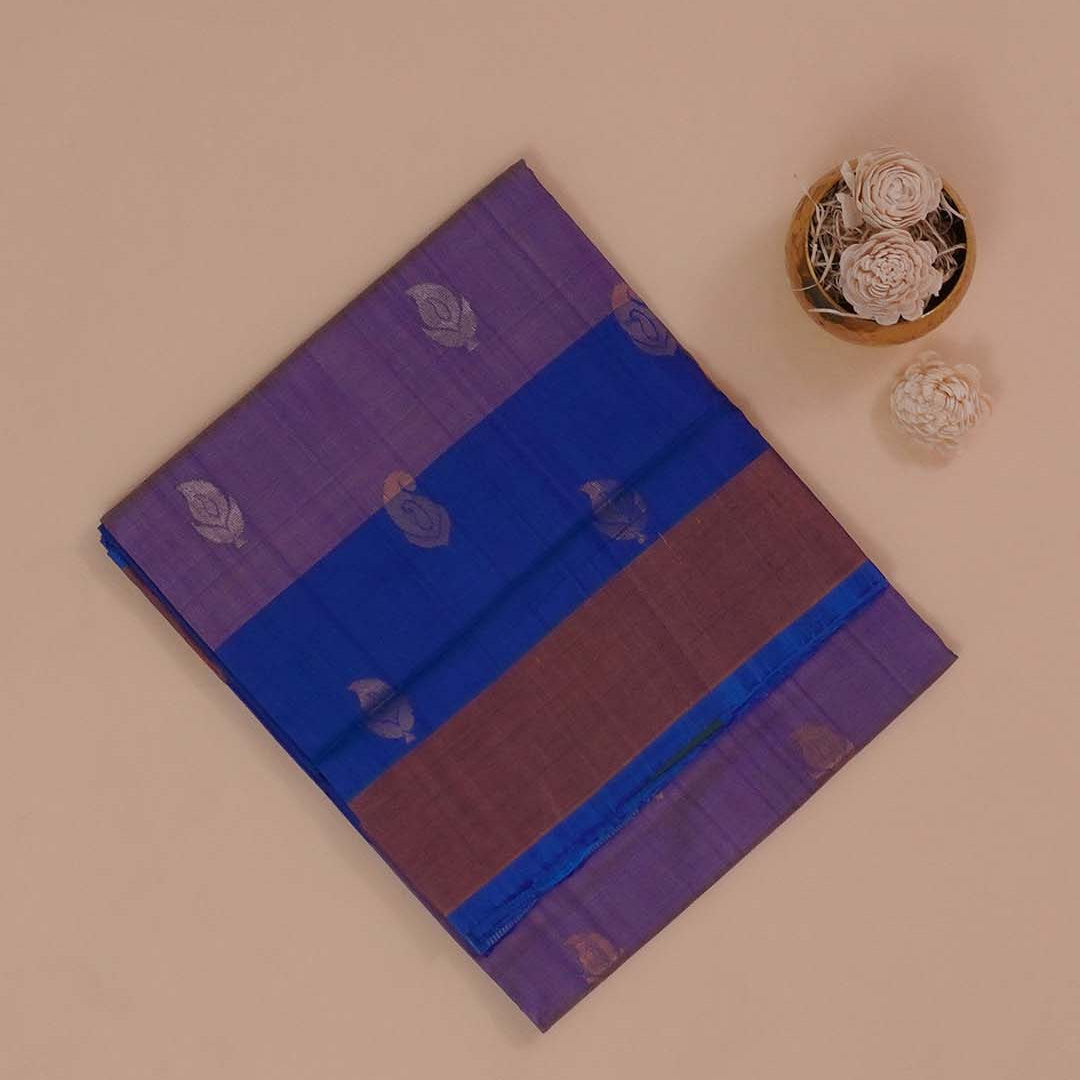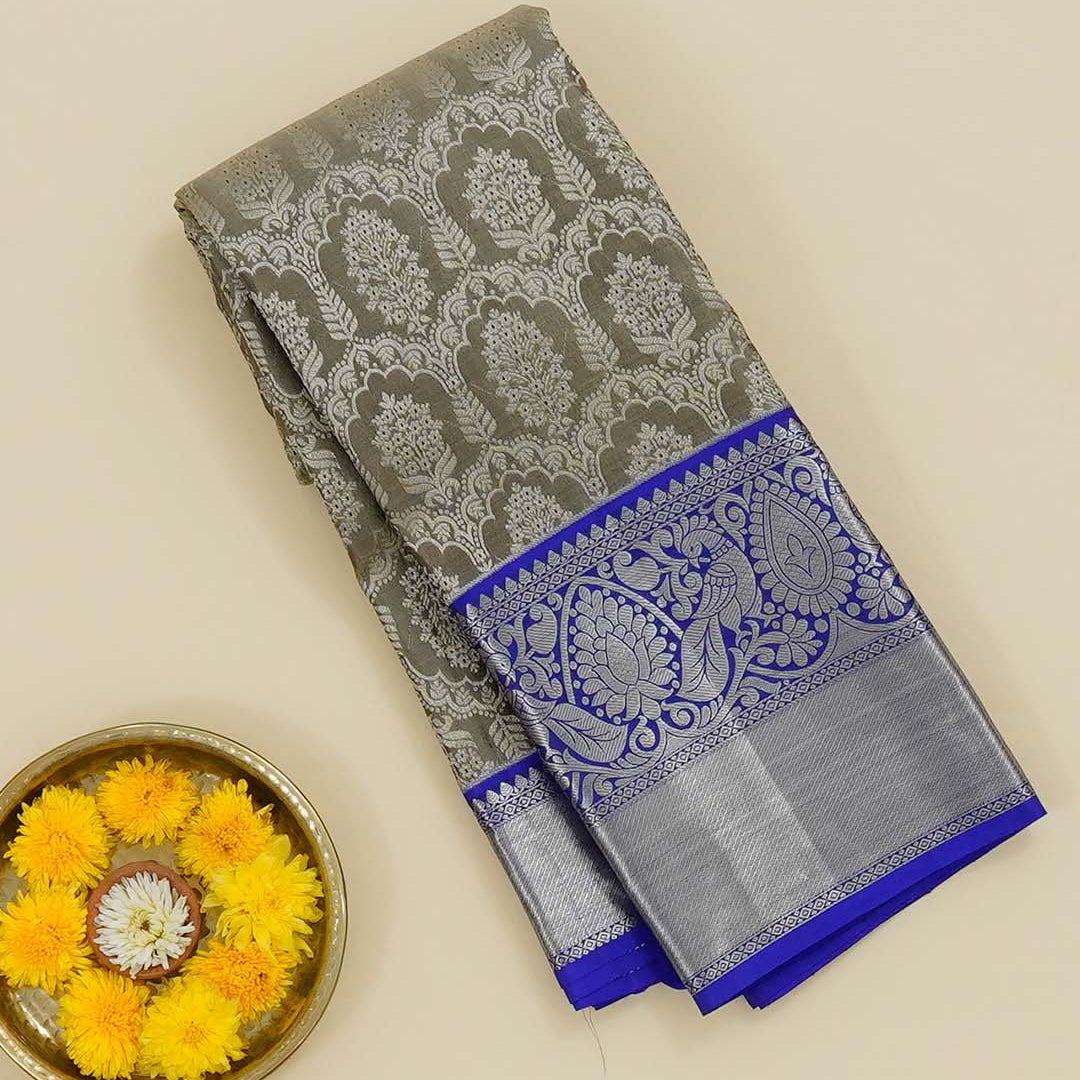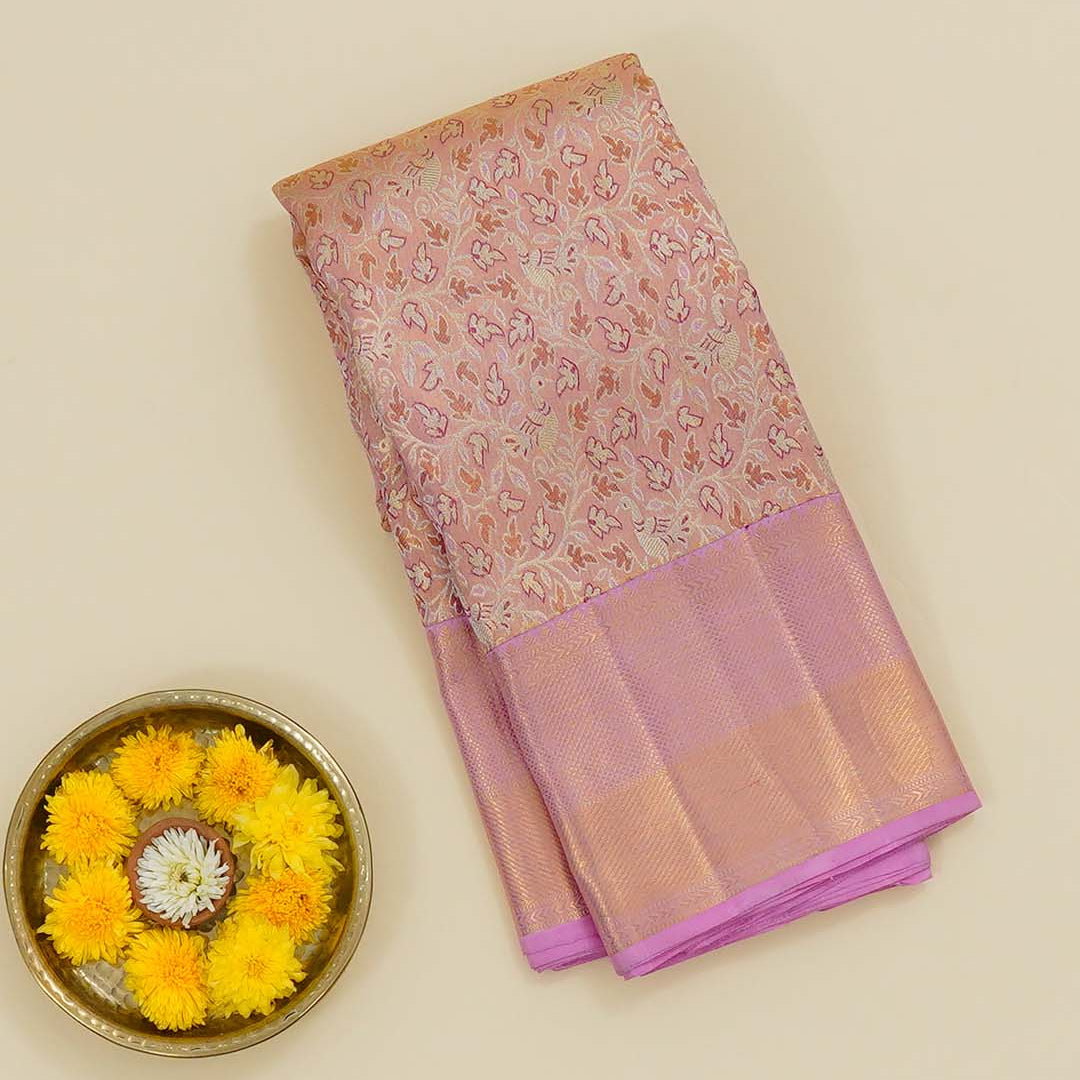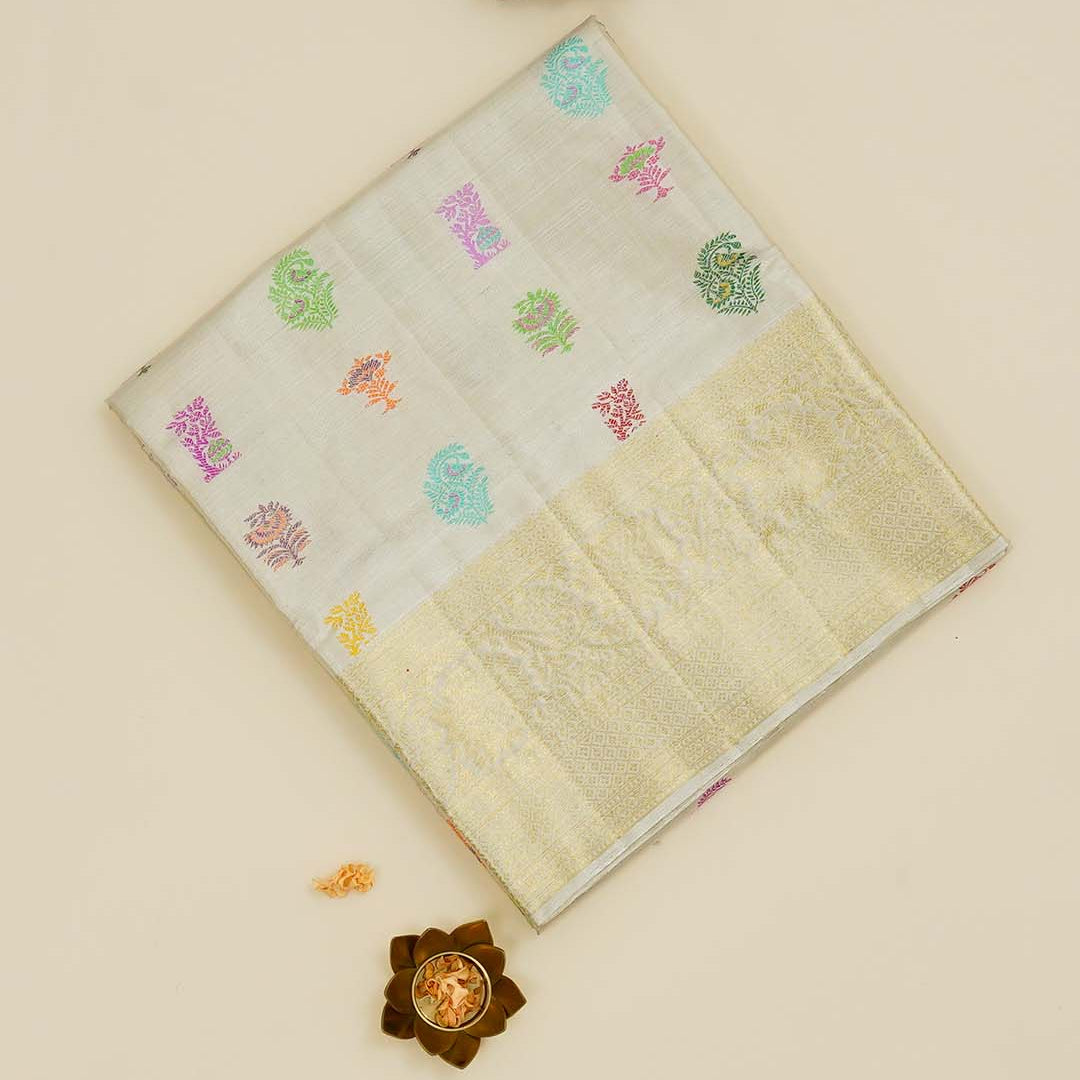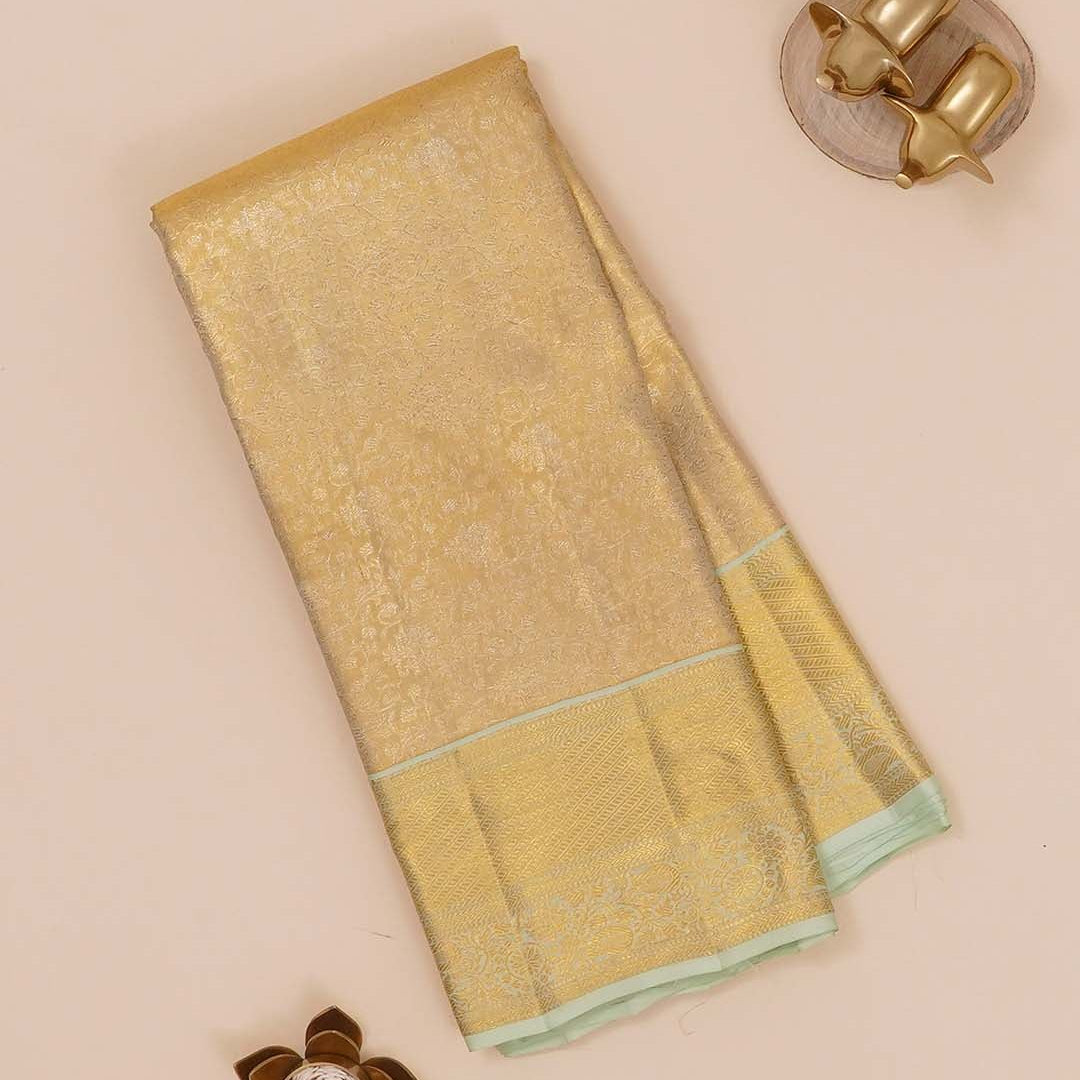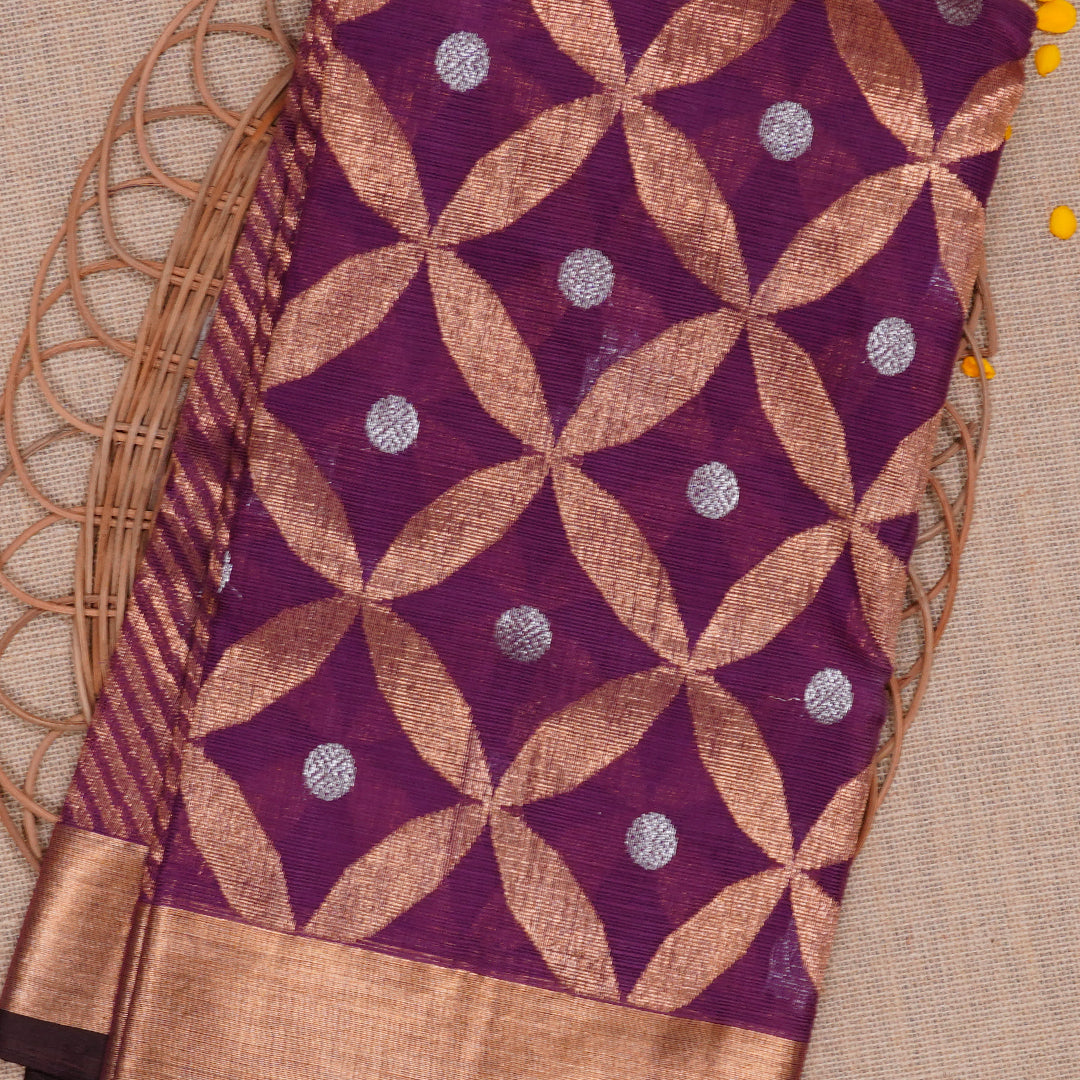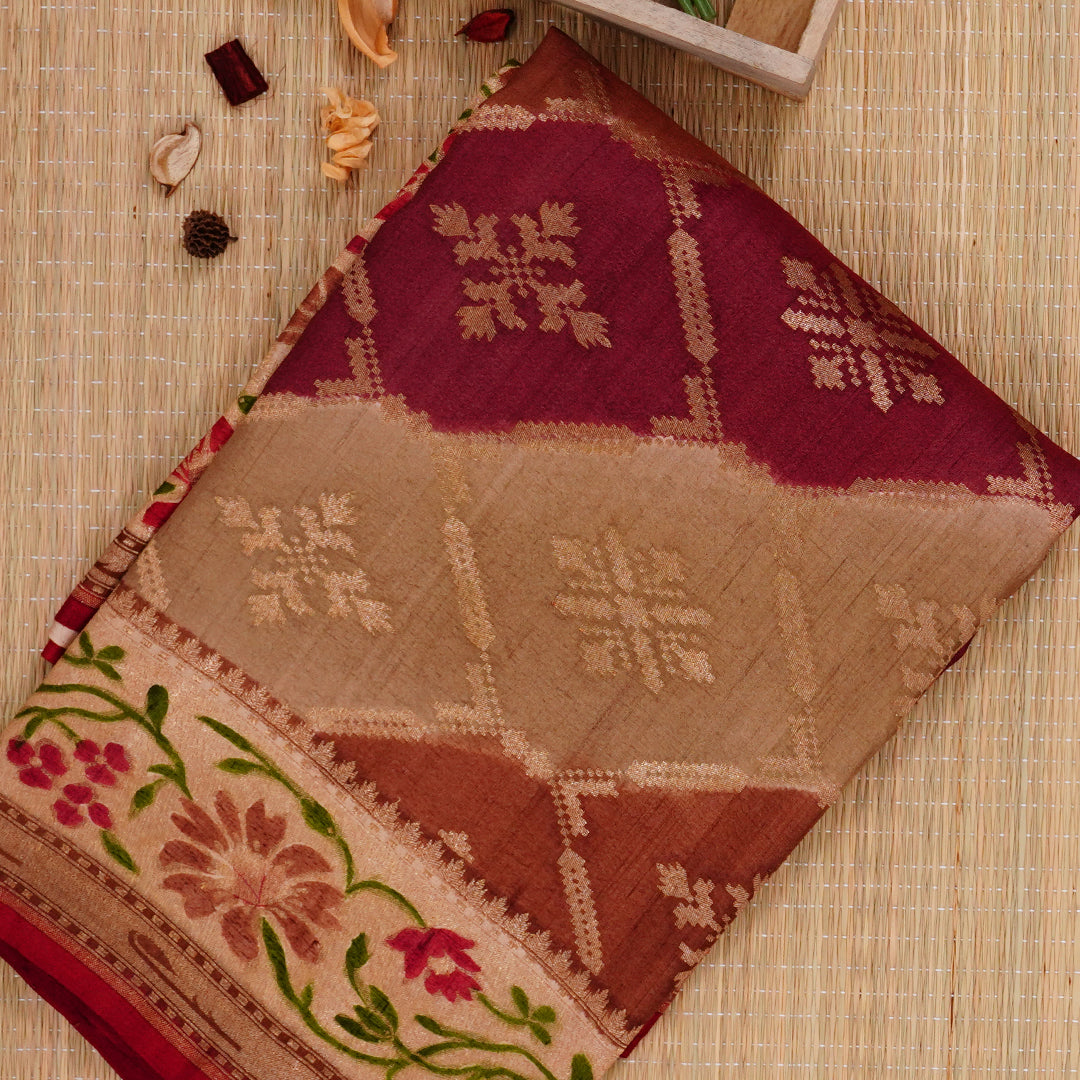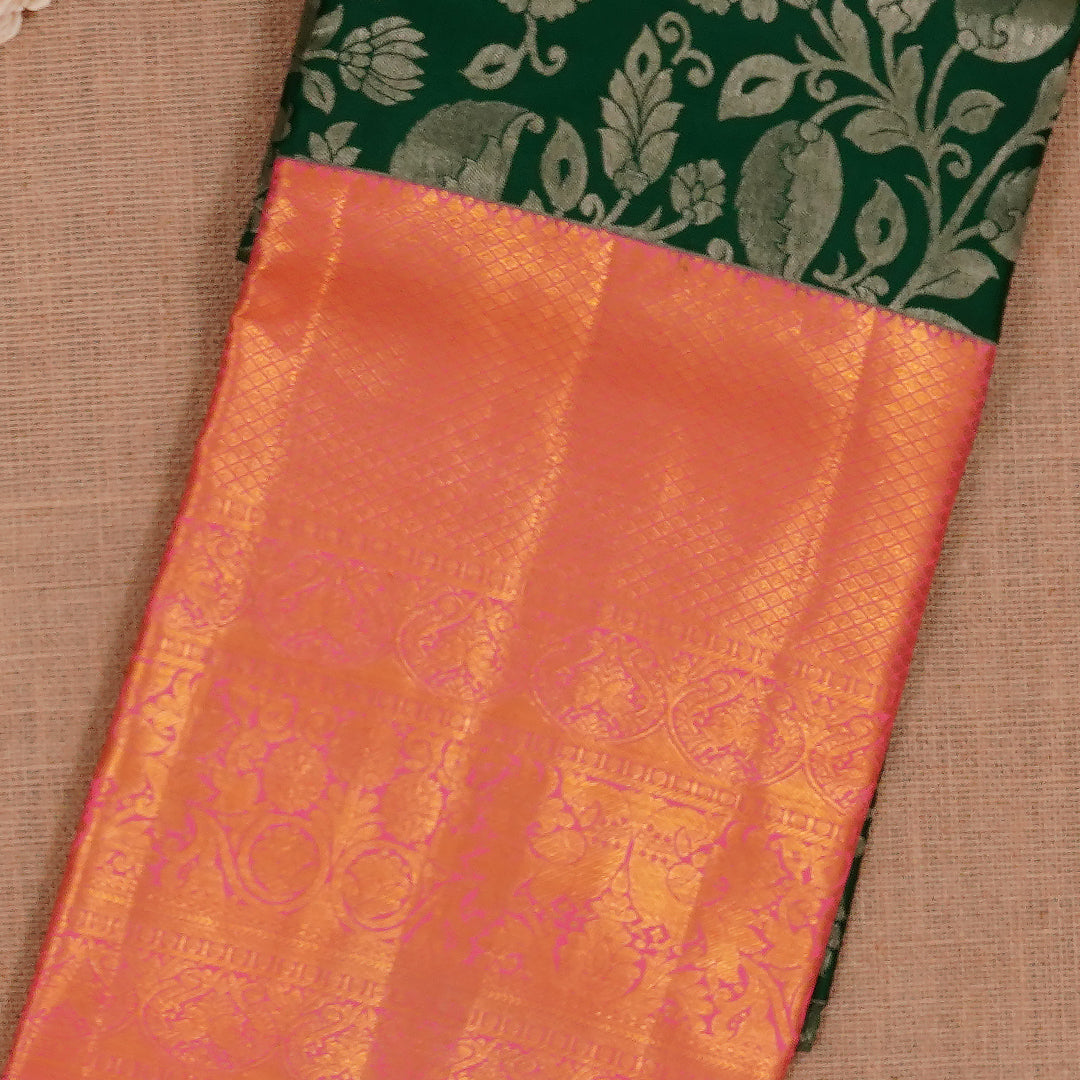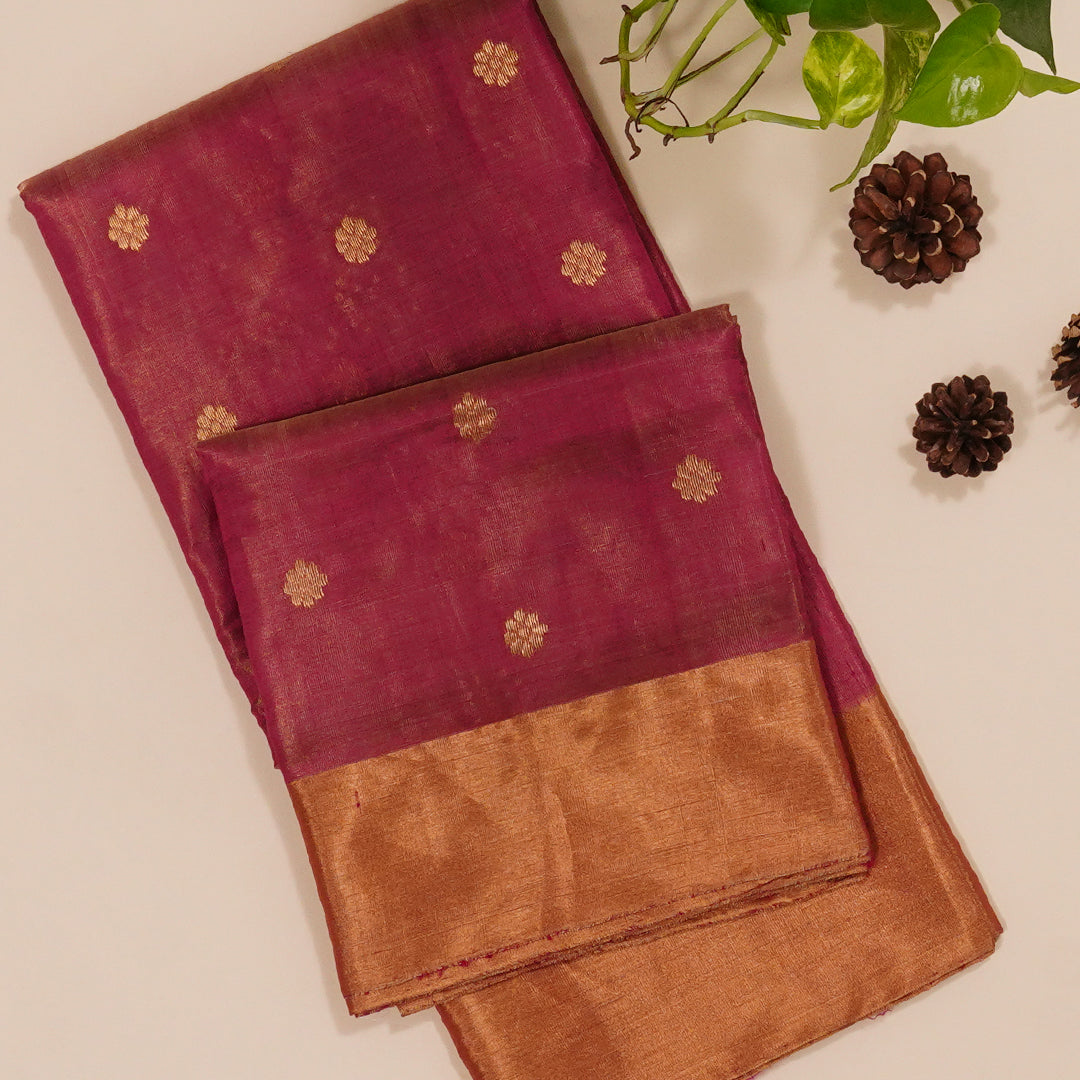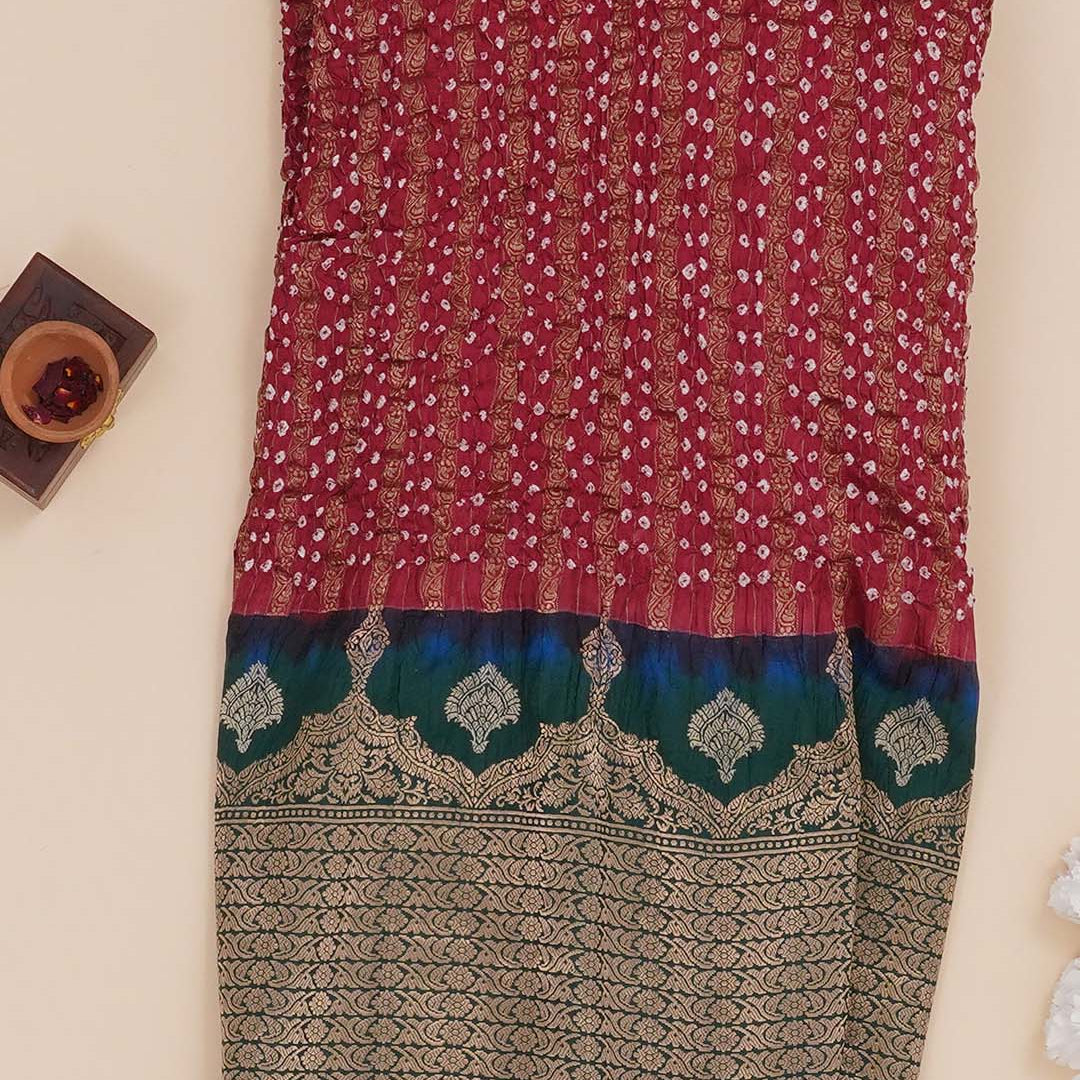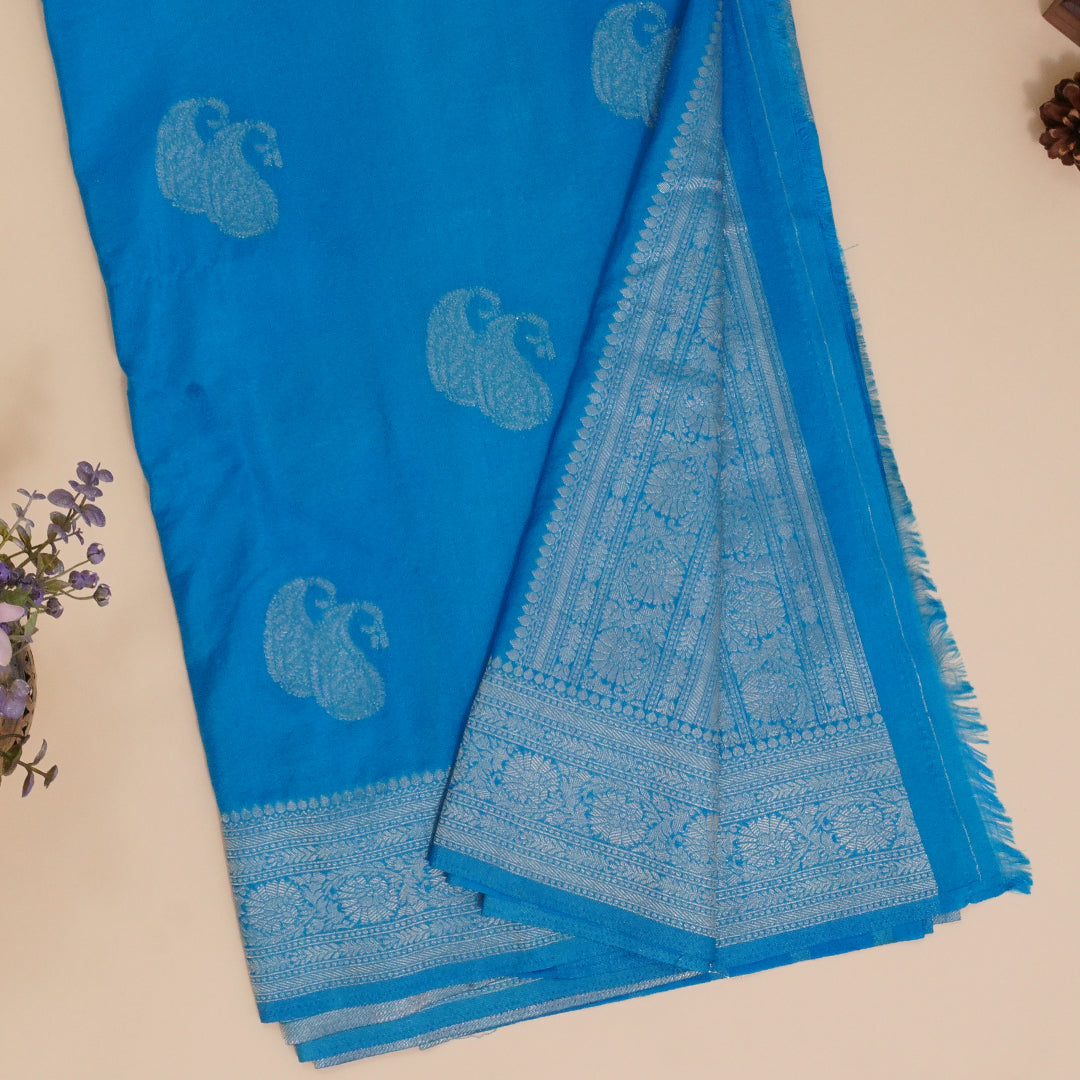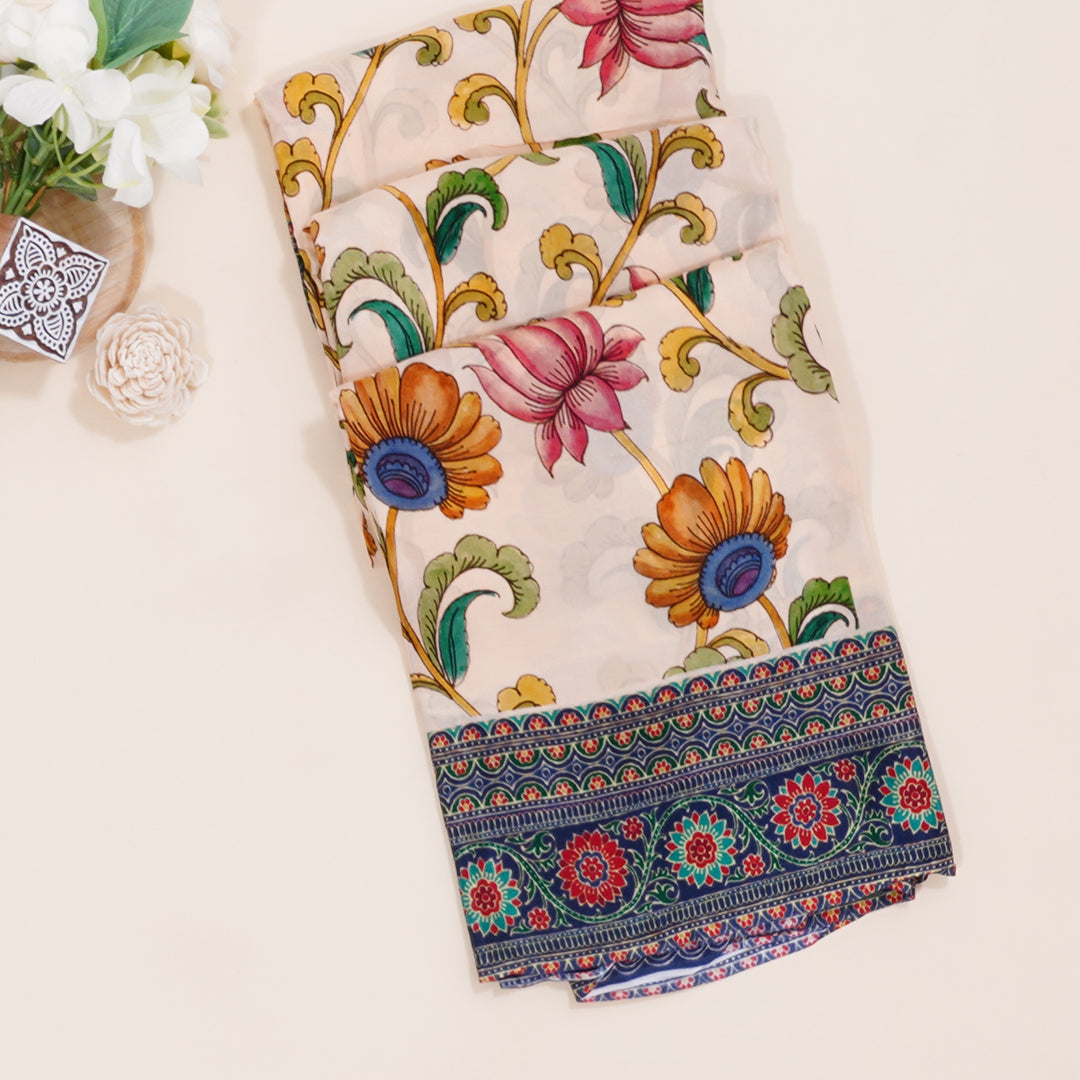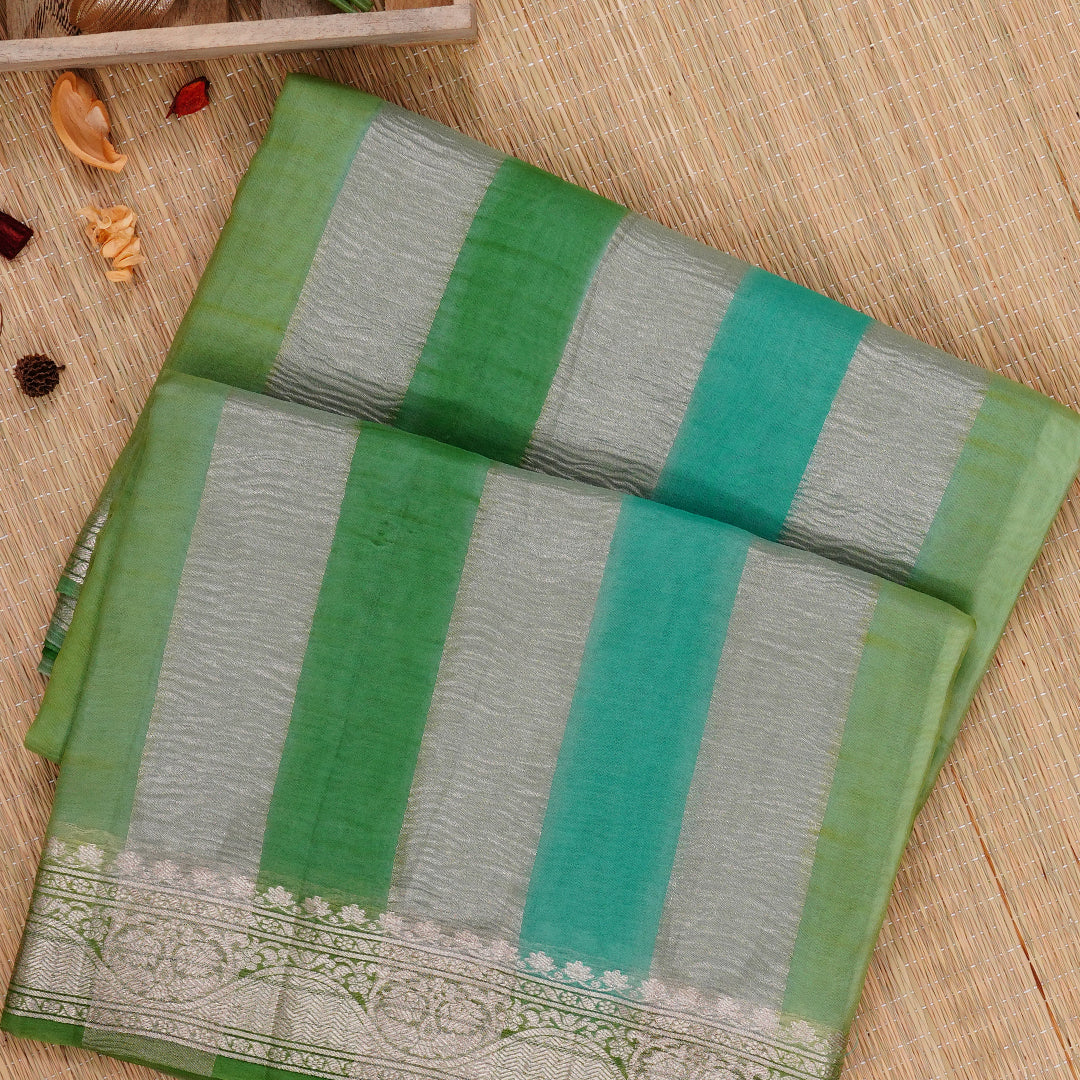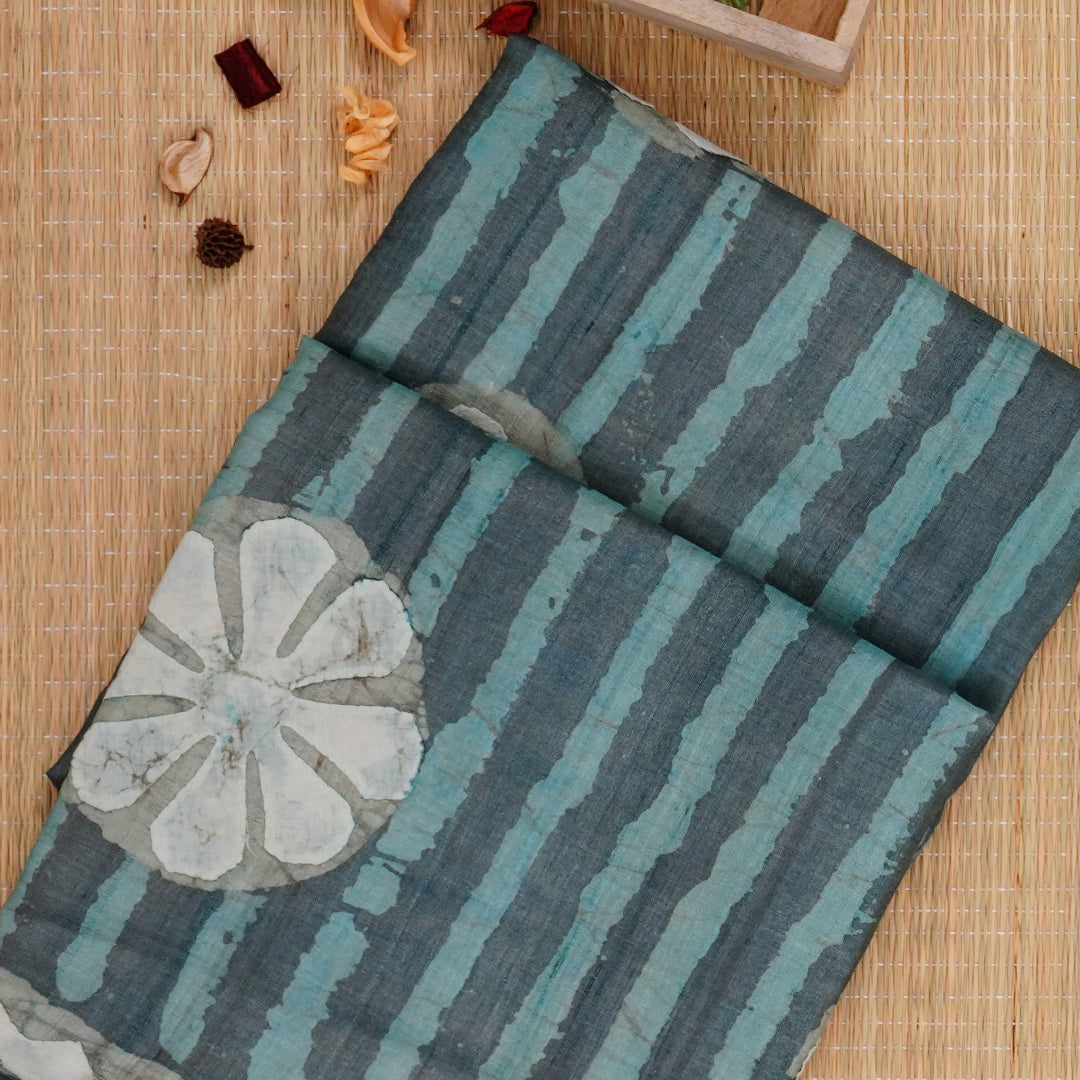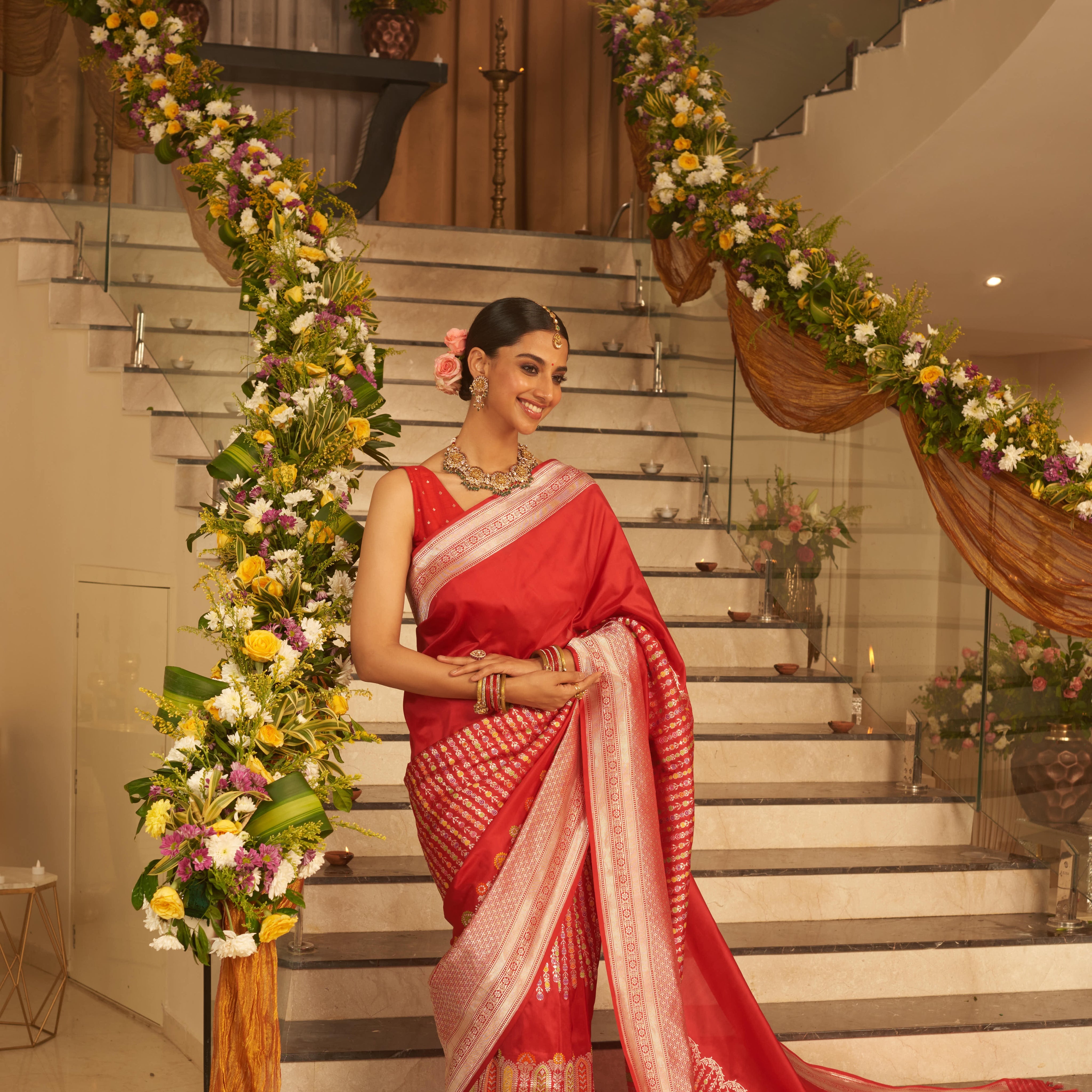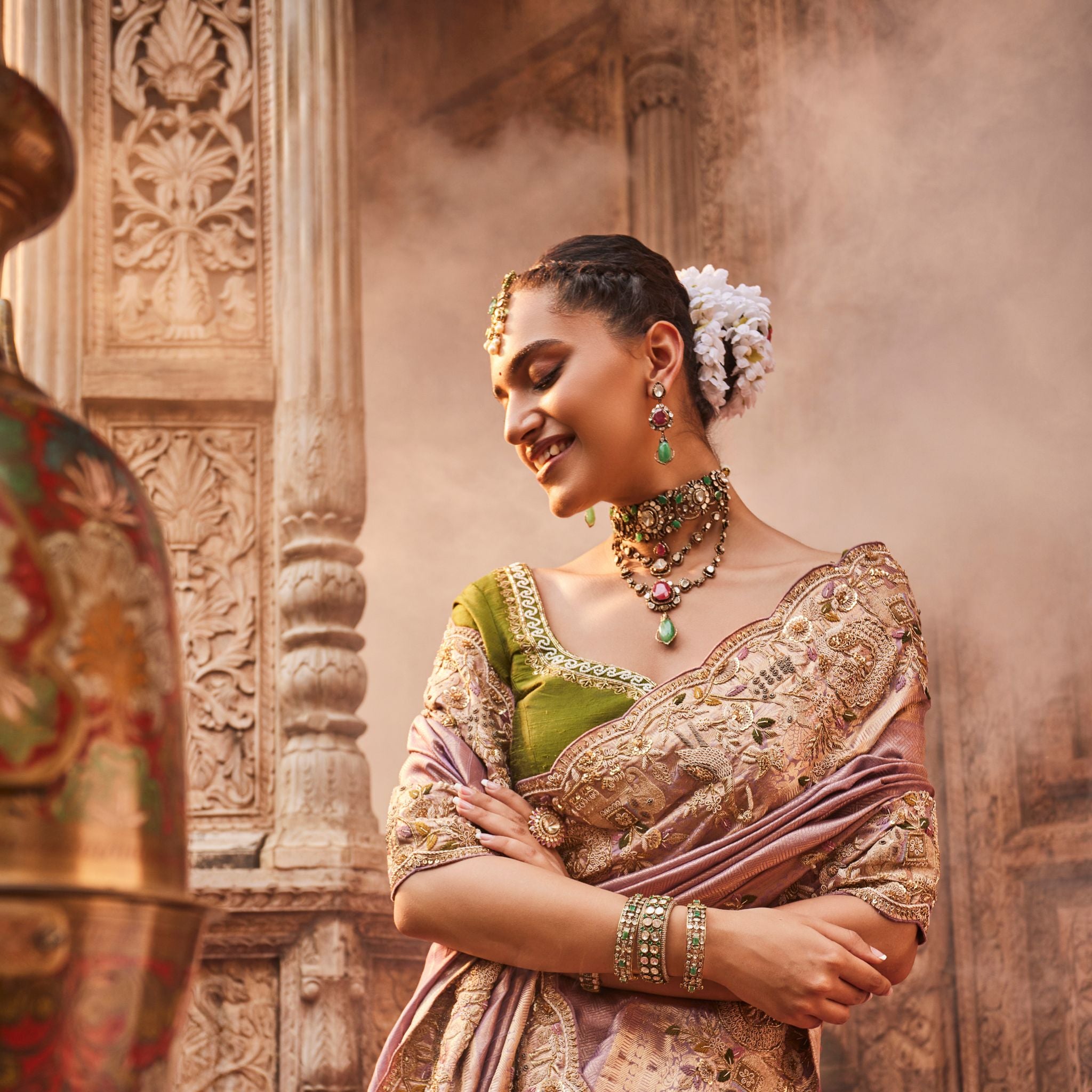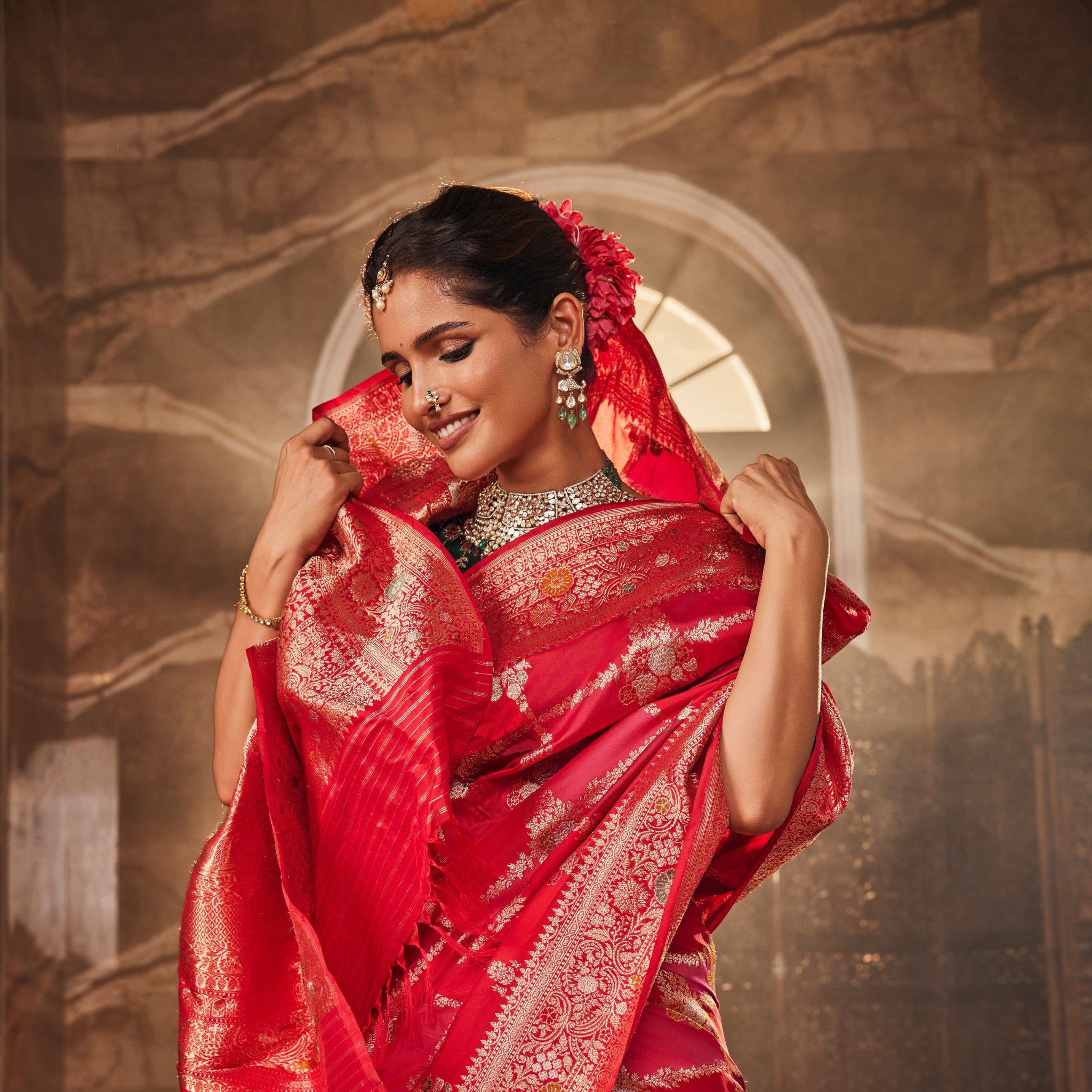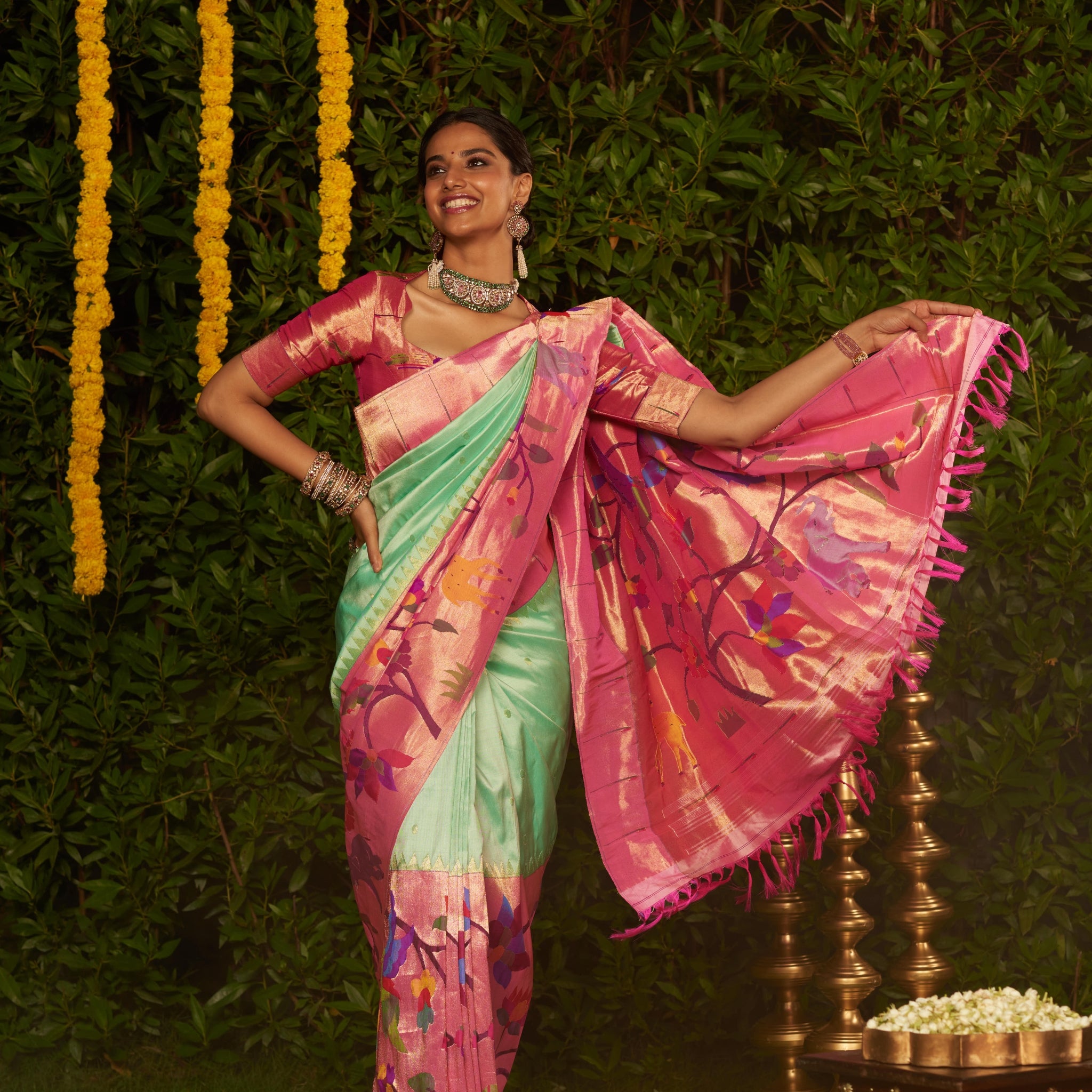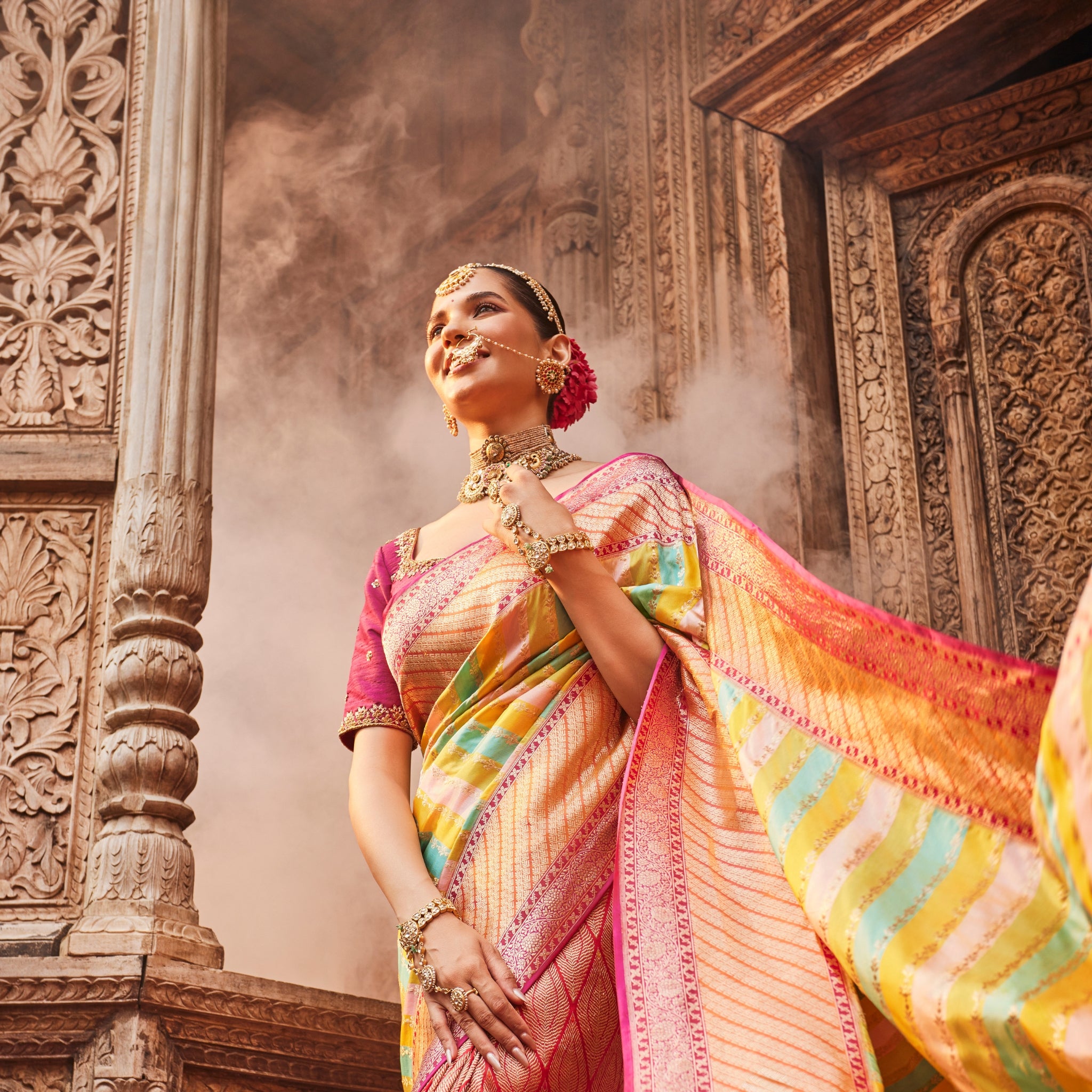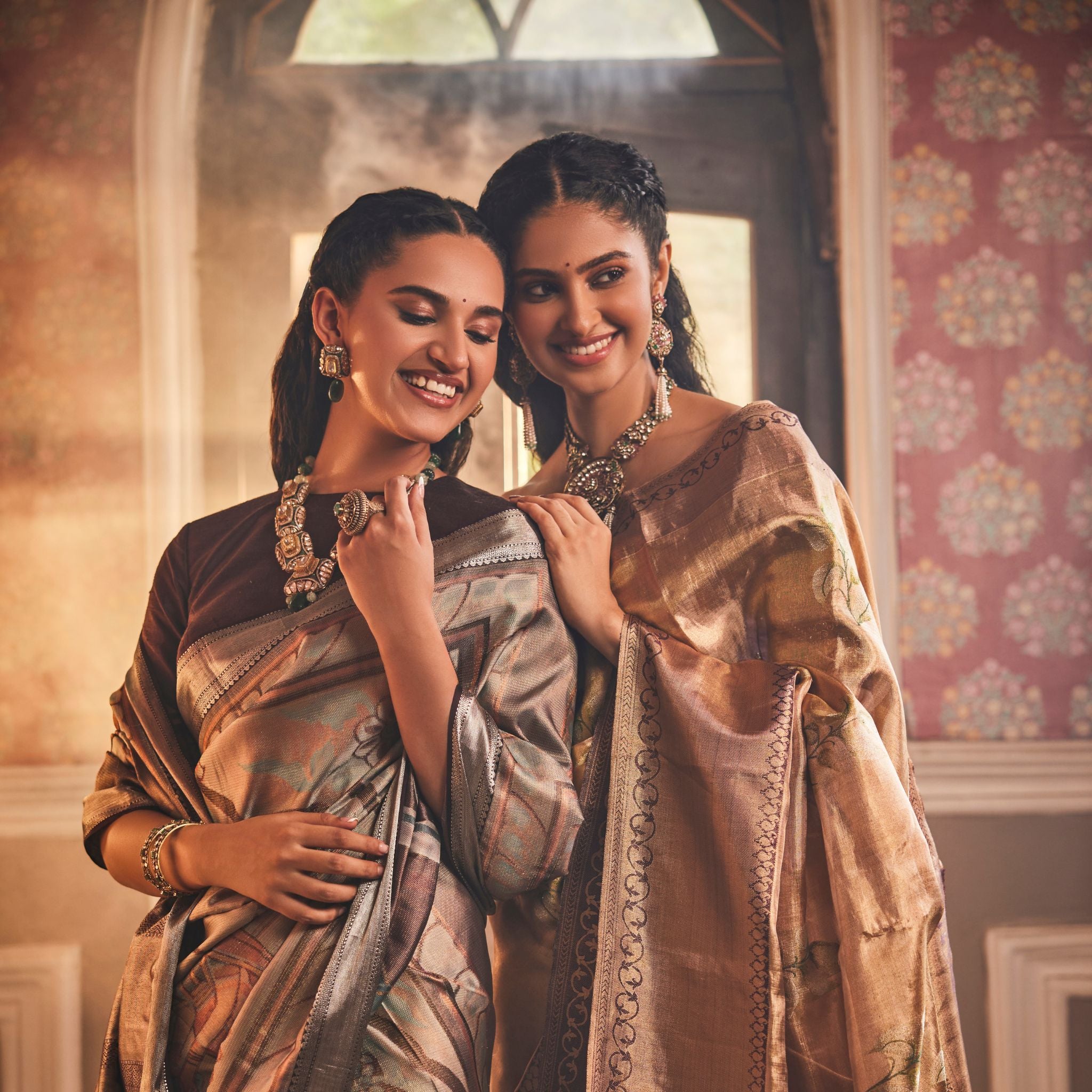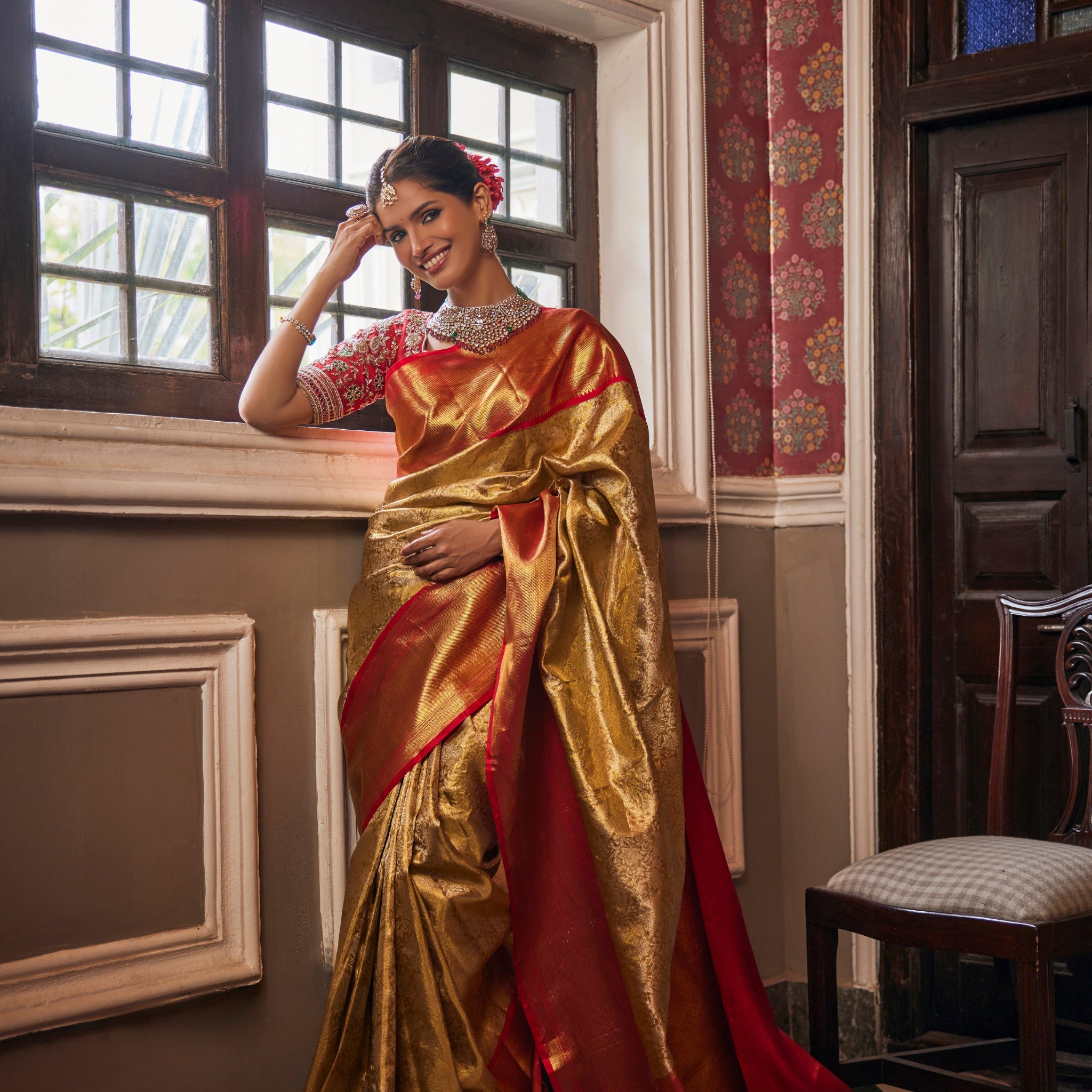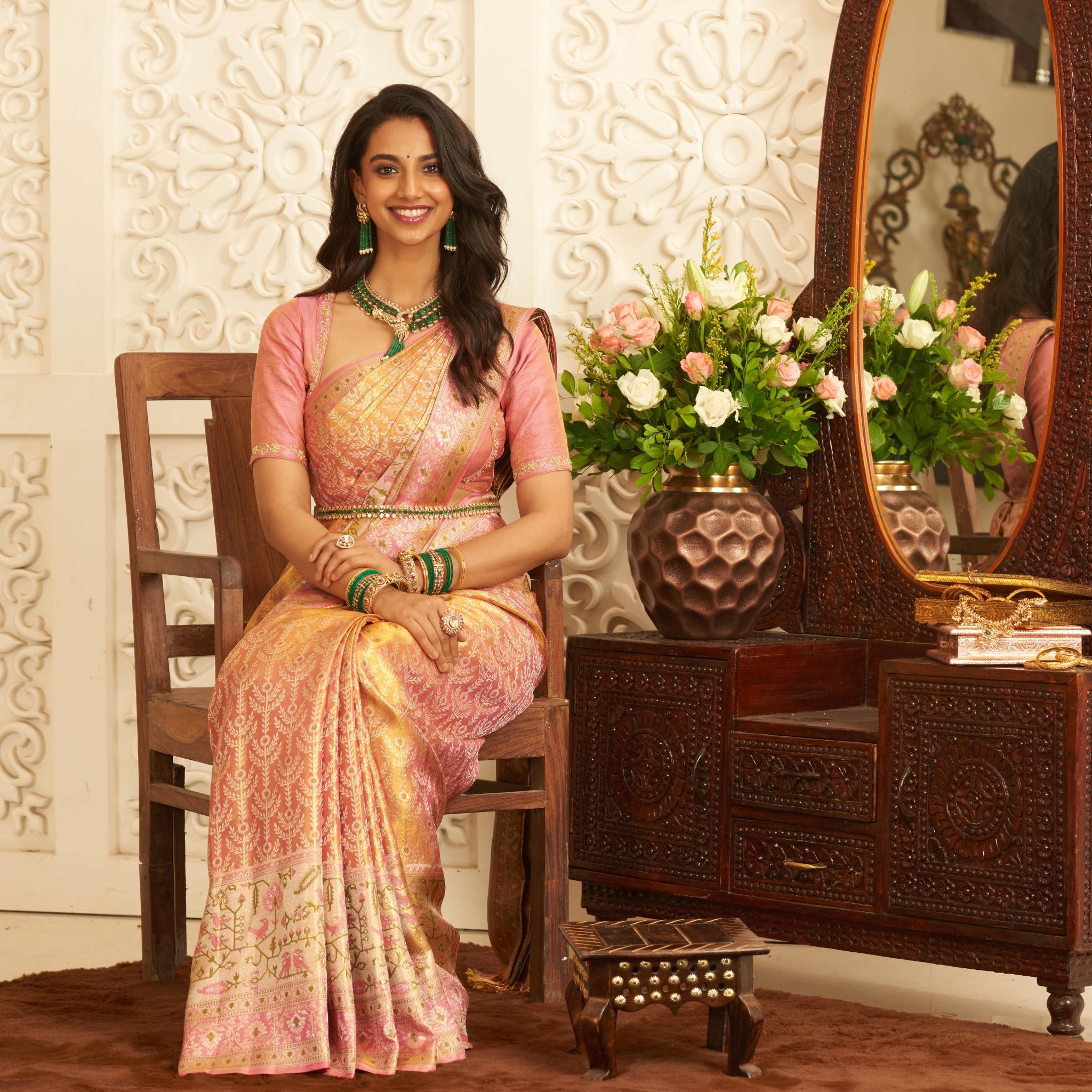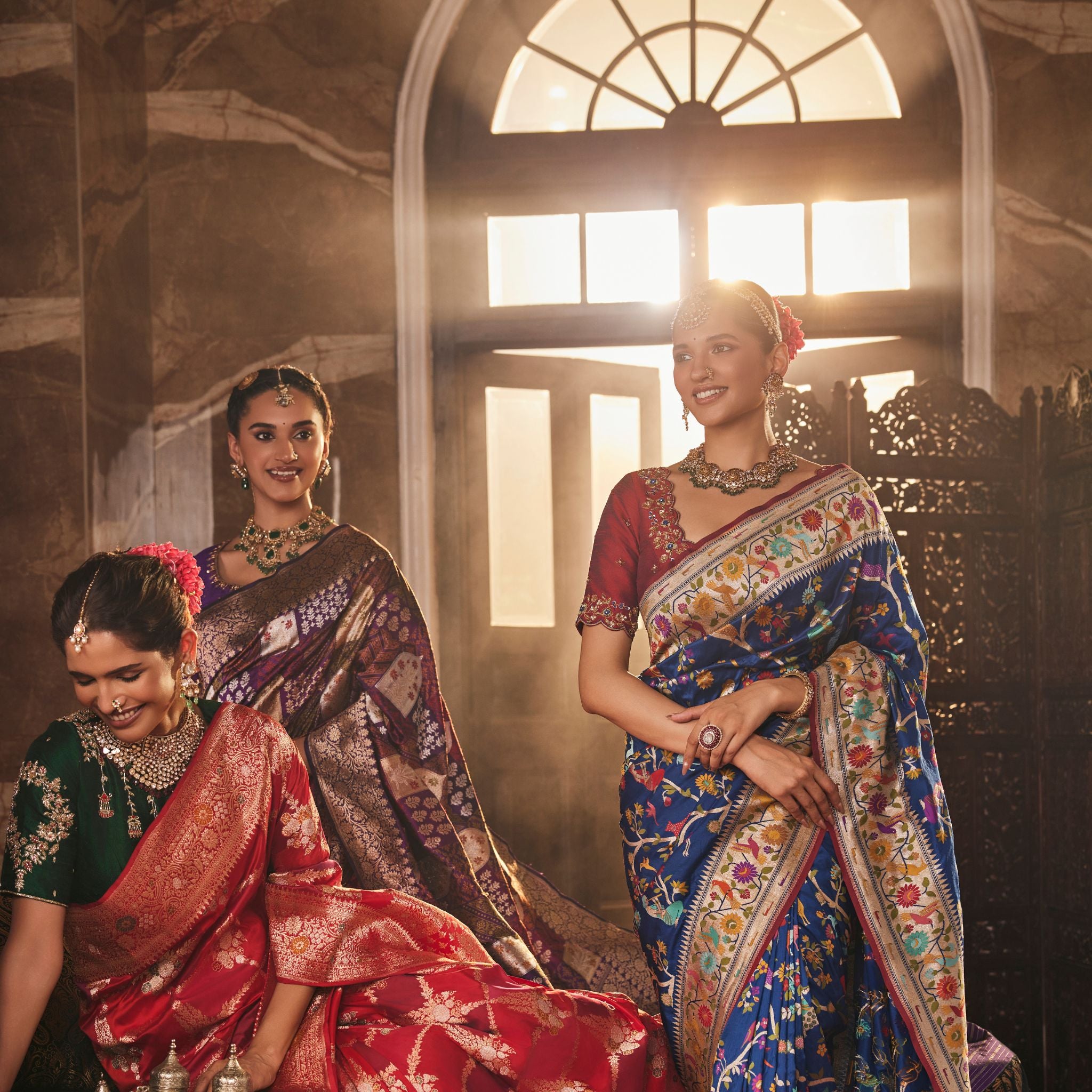Top 10 Banaras Saree Designs for Weddings & Festivals | Vaarahi Silks
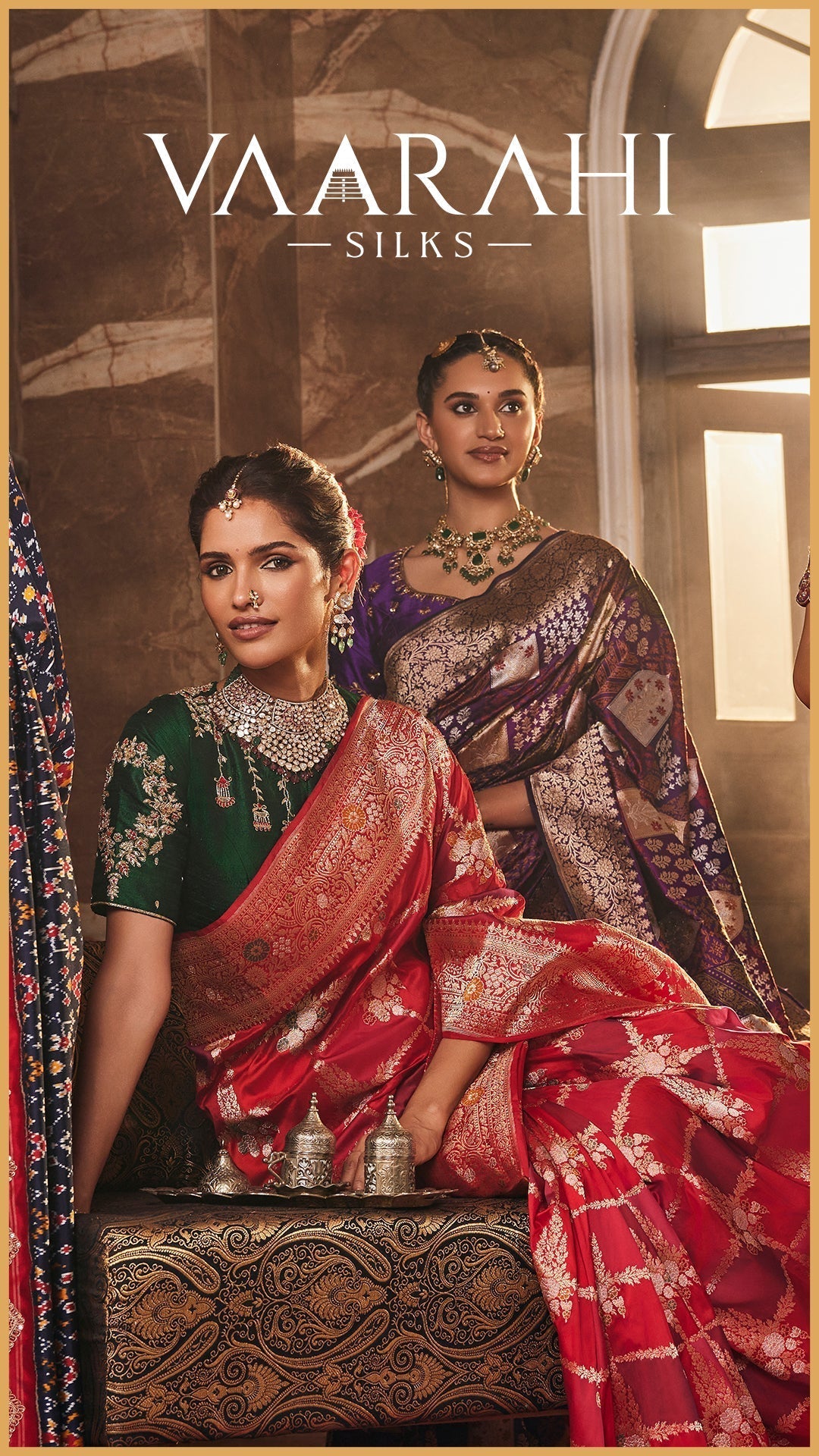
1 When it comes to Indian weddings and festive celebrations, Banaras sarees (also known as Banarasi sarees) hold an unmatched legacy of elegance and craftsmanship. These sarees, woven in Varanasi, are prized for their intricate zari work, rich silk texture, and enduring appeal. If you’re looking to buy a banaras saree online or want to choose the perfect design for your big day, this guide to the top 10 Banaras saree designs for weddings & festivals will help you pick a showstopper.
Why Banaras Sarees Are a Must for Weddings & Festivals
Before diving into designs, let’s understand what makes Banaras sarees a perennial favourite:
- Heritage weaving: Banaras (Varanasi) has centuries-old weaving traditions, especially in brocade and zari work.
- Rich silk and metallic threads: Genuine Banarasi sarees use fine silk (e.g., katan), and zari (metallic thread) to form elaborate motifs
- Versatility in formality: From light, airy organza styles for daytime events to heavy brocade for evening receptions, there is a Banaras saree for every occasion.
- Emotional & heirloom value: Many brides pass Banarasi sarees from generation to generation, making them more than just garments—they are treasures. Given this heritage, here are ten Banaras saree styles you should consider for weddings & festivals.
1. Katan Banarasi Saree (Pure Silk Bridal Classic)
Why it stands out: Katan is a pure mulberry silk fabric, known for its dense, luxurious feel. The sheen and weight make it perfect for grand occasions.
Best use: Main wedding ceremony, reception, or bridal look.
Styling tip: Because of its richness, pair Katan sarees with a relatively simple blouse or minimal jewelry to let the saree shine. Also, make sure the drape is comfortable (you’ll wear it for hours).

2. Jangla / Jaal Weave Saree
Why it stands out: Jangla or Jaal design involves all-over motifs (flowers, creepers, vines) covering the body of the saree. This creates a continuous, densely patterned look.
Best use: Reception or wedding functions where you want full impact.
Styling tip: Since the saree itself is very busy, keep the blouse design simpler. Let the drape and motifs be the focal point.

3. Tanchoi Banarasi Saree
Why it stands out: Tanchoi features figural motifs and brocade-like weaving, often with pictorial scenes or larger, prominent motifs.
Best use: Dinner receptions, grand functions, or as an artistic bridal piece.
Styling tip: Elegant jewelry (like a statement neckpiece) pairs well. Use a solid-color blouse to highlight the motifs.

4. Butidar / Butti Weave Saree
Why it stands out: Butidar sarees have small repeating motifs (butis) spread evenly across the body. It is subtle, refined, and less overwhelming than full brocade.
Best use: Pre-wedding rituals like haldi, puja, or daytime festive events.
Styling tip: Accent with contrast bangles or waist belts, and allow small motifs to complement your jewelry rather than compete with it.

5. Organza / Kora Banarasi Saree
Why it stands out: Organza or kora Banarasi is lighter and more translucent, combining the Banarasi motifs with airy elegance.
Best use: Daytime functions, summer events, or ceremonies where comfort and elegance both matter.
Styling tip: Pastel colors, rose-gold jewelry, and soft drapes work beautifully with such sarees.

6. Shattir Banarasi Saree
Why it stands out: Shattir is a lighter version of Banarasi silk. It blends finesse and wearability, suitable for those who prefer less heavy drapes.
Best use: Sangeet nights, mehendi functions, or cocktail receptions.
Styling tip: A modern blouse cut (strapless, halter) or lighter accessories suit Shattir’s breezy feel.

7. Tissue Banarasi Saree
Why it stands out: Tissue sarees include metallic threads in the base fabric, giving a luminous, semi-sheer, glittering effect.
Best use: Reception or evening banquets where dramatic lighting can amplify the shimmer.
Styling tip: Go minimal on the blouse, let bold earrings or a clutch complete the look.

8. Meenakari / Resham Brocade Saree
Why it stands out: Meenakari or resham work weaves colorful silk threads (residence) into the fabric, creating vibrant motifs that contrast with the base.
Best use: Daytime wedding events or for brides who love lively colors.
Styling tip: Choose jewelry pieces that pick one of the accent colors in your saree for harmony.

9. Cutwork / Border-Intensive Banarasi
Why it stands out: Here, the focus is on dramatic borders or pallu. The edges may be scalloped or detailed in heavy cutwork.
Best use: Wedding ceremony, bridal portraits, or occasions where the border will be prominent in photos.
Styling tip: A blouse that echoes border motifs or colors can tie the look together.

10. Contemporary / Fusion Banaras Saree
Why it stands out: Designers now reinterpret Banaras weaves into gown-saree hybrids, drape-fusion styles, and asymmetrical cuts. It’s tradition meeting modern sensibility.
Best use: Reception or fashion-forward wedding events.
Styling tip: Keep accessories minimal and sleek to let the silhouette and weave shine.

How to Choose the Right Banaras Saree (Checklist)
|
Factor |
What to Consider |
Why It Matters |
|
Event Timing / Lighting |
Daytime → lighter sarees (organza, shattir) Evening → heavier / shimmering (katan, tissue) |
Lighter sarees feel more comfortable in daylight; heavier ones dazzle under evening lights |
|
Comfort & Mobility |
If you’ll be walking, dancing, greeting — avoid extremely heavy brocades |
You’ll enjoy your day more if the saree doesn’t weigh you down |
|
Skin Tone & Color |
Bold traditional reds/maroon/green for classic bridal; pastels or jewel tones for contemporary |
The right color enhances your complexion and photos |
|
Design Density |
All-over (jangla) vs spaced motifs (butidar) vs border-heavy |
Match the motif density with your accessory style; too many competing elements can overwhelm |
|
Budget & Heirloom Value |
Pure silk + real zari = premium; lighter weaves or mixed fabrics may cost less |
Decide whether you want it as a keepsake or a striking piece for select functions |
|
Authenticity Check |
Look for GI tags, Silk Mark, weave irregularities, real zari tests |
To ensure you don’t get dupes or machine-made imitations |
Vaarahi Silk STORE LOCATIONS :
📍Vaarahi Silks Jubilee Hills
Vaarahi Silks, Road No. 36, opp.
Metro Pillar # C1604, Jubilee Hills, Hyderabad,
Telangana 500033
Map: https://share.google/GyvPzx53nUu2YaJtR
📍 Vaarahi Silks KPHB
Vaarahi Silks, Rd Number 1, opp. Metro Pillar A756,
near KPHB Colony, K P H B Phase 1, Kukatpally,
Hyderabad, Telangana 500072
Map: https://share.google/kUaaQxoMGXv2P42Gj
📍 Vaarahi Silks patny center, Secunderabad
Vaarahi Silks, 1-1-100, Rashtrapati Rd, opposite HPO,
Kummari Guda, Kalasiguda, Secunderabad,
Telangana 500003
Map: https://share.google/ytqY5Fu0Ljbj6x8NJ
📍 Vaarahi Silks Nellore
B. V. Nagar, Mini Bypass Road, Nellore, Andhra Pradesh 524003
Map:https://share.google/H2Rak38iuC9bPd9Me




